






































































































The Whistler Adaptive Sports Program partners with the Invictus Games to support and celebrate individuals with disabilities. - By David Song
OPENING
Whistler was made to host, but not since the 2010 Olympic Winter Games has the resort seen a party like Invictus. Are you fired up, Whistler?
08 LETTERS TO THE EDITOR Letter writers this week weigh in on the tariff threat from south of the border, and call for more oversight for mountain bikers in Squamish.
19 RANGE ROVER At a one-of-a-kind coffee shop in north Kelowna, Leslie Anthony discovers there’s an entire world of coffee as experience
38 PIQUE’N YER INTEREST The inspiring story of Shames Mountain Ski Area could hold lessons for Whistler, writes Lizi McLoughlin.
10 PAUSE FOR EFFECT U.S. tariffs on Canada are on pause, for now, as local leaders sort through the uncertainty and weigh potential impacts.
The Cheakamus Community Forest will test out ecologist Rhonda Millikin’s approach to wildfire mitigation in an upcoming pilot project.
22 MORE COWBELL Whistler ski-cross queen Marielle Thompson notched back-toback victories in Veysonnaz, Switzerland last week.
26 LIGHT IT UP After a successful launch last month, Candlelight Concerts is preparing more Whistler events in the weeks and months ahead.
COVER Kintsugi: “to repair with gold”; the art of repairing pottery with gold or silver lacquer and understanding that the piece is more beautiful for having been broken. - By Jon Parris // @jon.parris.art
Publisher SARAH STROTHER - sstrother@piquenewsmagazine.com
Editor BRADEN DUPUIS - bdupuis@piquenewsmagazine.com
Sales Manager SUSAN HUTCHINSON - shutchinson@piquenewsmagazine.com
Production Manager AMIR SHAHRESTANI - ashahrestani@piquenewsmagazine.com
Art Director JON PARRIS - jparris@piquenewsmagazine.com
Advertising Representatives
TESSA SWEENEY - tsweeney@wplpmedia.com
ANDREW BUDRESKI - abudreski@piquenewsmagazine.com
Digital/Sales Coordinator KATIE DOUGLAS - kbechtel@wplpmedia.com
Reporters
BRANDON BARRETT - bbarrett@piquenewsmagazine.com
DAVID SONG - sports@piquenewsmagazine.com
LIZ MCDONALD - emcdonald@piquenewsmagazine.com
LUKE FAULKS - lfaulks@piquenewsmagazine.com
Office Manager HEIDI RODE - hrode@wplpmedia.com
Classifieds and Reception - mail@piquenewsmagazine.com
Contributors G.D. MAXWELL, GLENDA BARTOSH, LESLIE ANTHONY, ANDREW MITCHELL, ALISON TAYLOR, VINCE SHULEY, ALYSSA NOEL
Founding Publishers KATHY & BOB BARNETT www.piquenewsmagazine.com































FOR ALL THE AMAZING experiences I’ve been fortunate enough to take in since moving to Whistler, I’ll always harbour a simple regret about this amazing place—that I didn’t get here about four-and-a-half years earlier.
Arriving as I did in the late spring of 2014, I was a little over four years removed from Whistler’s crowning achievement: the 2010 Olympic Winter Games.

At the time of my arrival, Whistler
BY BRADEN DUPUIS
hadn’t fully come down from the high, and the electricity of the Games still resounded
For me, it was a bit like going to school on Monday after missing the big party Friday night—everyone still raving about the rager of the century; me with my FOMO, no epic stories to share and no frame of reference to compare.
Even fifteen years later, the glow has yet to fully fade. Just ask any of the many longtime locals fortunate enough to be here for the Olympics—while you’ll no doubt hear stories of inconvenience (inviting the whole world all at once does come with its logistical drawbacks), the overwhelming sentiment you’ll hear is pride.
After all, Whistler was built to play the host—think premier sporting events
like Ironman, or annual, locally produced offerings like Cornucopia, the Whistler Film Festival, Crankworx and the World Ski and Snowboard Festival (to name just a few)— when the world is watching, Whistlerites always bring their best.
That sense of community hospitality will once again be on full display for the Invictus Games Vancouver Whistler 2025, taking place in both host communities Feb. 8 to 16.
“I hope Whistlerites are as fired up as I am for welcoming the world to Whistler,” Mayor Jack Crompton told Pique last week.
Olympic Park, the Whistler Sliding Centre and on Whistler Mountain—thanks in part to that other world-class sporting event.
“We are so thrilled to be using worldclass amenities that were used for the 2010 Olympic and Paralympic games,” said Chelsey Walker, director of Whistler operations for the Invictus Games. “We’re going to have a magical experience, with some competitors experiencing winter sports for the very first time, and others who are highly experienced.”
While the Royal connection (and the paparazzi circus that brings) is a major focal
in the Italian navy for 20 years, before an accident left him without the use of his legs.
“He was an athlete before the accident, and when he knew the opportunity came to participate in the Invictus Games, he was glad to do this and he is glad now to be here,” Porpiglia told Pique through a translator.
“It’s a dream that has come true. Sports has helped him to reach other things that he has not thought to reach before. Not for the victory, but for himself.”
As the translator spoke the last line, Porpiglia patted his chest proudly.
This week presents a rare opportunity for Whistlerites—the chance to once again host the world, and to show everyone exactly why we’re so proud to live here.
Well, Whistler? Are you fired up?
Founded in 2014 by Prince Harry, the Duke of Sussex, Invictus—in Latin, “unconquered”—is an international, multisport competition for wounded, injured, and sick servicemen and women.
All told, more than 550 competitors from 25 nations will compete in the Games.
The 2025 edition will mark the seventh Invictus Games in its history, and the first time it includes winter sports. Whistlerites will be able to take in the action at Whistler

Thisbrightupgradedone-bedroom townhome isaquintessential Whistlerproper ty! Withitsprimelocationin Creekside,skiersand bikerswilllove the two-minute walk to access thegondola,whileashortstrollwillput you infrontofthebustlingshopsand restaurants Creeksidehas to offer. Thenewwindows offer plenty ofnaturallightandsouthwestmountain viewsintheopen-conceptmainlivingareas. Unlimited ownerusewithnightly rentaloption Asking-$799,000 2-2150 Sarajevo Drive

point of media coverage, the Games are of course about the competitors themselves.
Pique had an opportunity to speak with four of them at the Invictus Games Participating Nations Training Camp in February 2024 (you can read more in our March 10, 2024 cover feature: “Unconquered”).
While all four came from different backgrounds, arriving at Invictus on wildly different paths, they all had similar things to say about the impact of the Games.
Giorgio Giuseppe Porpiglia was a marshall
Invictus competitors are as proud and resilient a contingent as you’ll ever meet, and to watch them compete on our home mountains and venues will be an honour.
If you haven’t yet gotten involved, be sure to take in some of the events themselves or the entertainment and festivities planned for Whistler Village.
This week presents a rare opportunity for Whistlerites—the chance to once again host the world, and to show everyone exactly why we’re so proud to live here. n



















This letter was sent to Minister Melanie Joly and MP Patrick Weiler, and shared with Pique.
I am a Canadian citizen, longtime member of the Whistler community (Patrick Weiler’s riding) and worked in the tourism industry for about 35 years, serving many U.S. clients.
We are about to enter a trade war that we have not asked for, against a much larger economic power. Those tariffs imposed on the U.S. by Canada may go unnoticed by most American citizens. Those imposed by the U.S. will not be immediately felt by Canadians who are not directly involved in exports. It does seem that we are caught between the proverbial “rock and a hard place.” Do we have the “spine” to stand up to a bully?
One reaction, not mentioned in the press to my knowledge, is a travel visa. A tariff on travel, implemented by the imposition of a travel visa at some rate like $100, (this is about the same as a Canadian pays to travel in New Zealand) would catch the attention of more in the U.S. than most other tariffs. More than most actions on Canada’s part this would at the very least reinforce to Americans the notion that many in Canada are skeptical of U.S. voting priorities or of the present

government or both.
Of course this would hurt our tourism industry, but at least it would carry an interprovincial message. It seems questionable that such a visa would impact a traveller planning a week-long vacation, but would likely impact day visits. Any tariff we impose is negative for Canada, but here at least is one that would reach a significant number of U.S. citizens who might just let their views known to their government.
Al Whitney // Whistler
Whistler council narrowly voted in 2020 to stop sending its garbage to an American landfill, a practice that had, for 15 years, seen local waste roll across the border in specialized rail cars. A B.C. landfill was chosen instead.
“I have a bit of a moral problem sending

our garbage over a border to another country,”
Councillor John Grills said at the time. “There could be issues down the road with policy changes either by the state or the federal government, which could present problems to us. It’s gone well for several years but that’s something we’re not in control of.”
Would the Trump tariffs now threatening Canada have derailed Whistler’s cross-border trash train? Perhaps it’s too soon to tell. But Councillor Grills’ spidey senses seem prescient today and deserve a hat tip.
Jeff Nagel // Whistler
Kudos to the Pique and Leslie Anthony for bravely publishing “It’s the End of the World as We Know It. Now What?” (Pique, Jan. 31). I’m excited to see more hard-hitting and intelligent



opinion pieces on the back page.
Meredith Gardner // Whistler
With full respect to Vince Shuley, I disagree with many of his statements in the Jan. 31 Pique (“North Shore trails need cooperation, not contention”). To begin, existing user groups in Squamish are facing an ongoing safety crisis from these rogue (illegal) trail developers.
On our world-class walking loop trail in the Smoke Bluffs Park, many long-term residents object and are frightened by the new trails that are being built by these “trail developers.” Consisting of small “hits” that all have access and egress from this existing walking trail, this group of anarchist bike riders feel it is their right to build these hazards to the public.
Come this spring, we will have a crisis. International tourists, dog walkers, local residents, trail runners wearing earbuds, parents and babies, and our prized over-70s hiking group are under constant threat by this small group. Always covered by full face shields so they cannot be identified, this is a group that threatens many in Squamish. They also build their “trails” on dark and stormy nights, to avoid being observed.
Many complaints and letters have been filed to the District of Squamish, the Squamish Chief newspaper, and the RCMP. The response to date has been to call for cooperation between these user
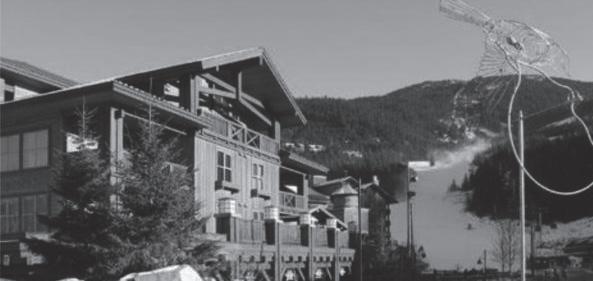



groups. This has been a complete failure to date. It is time now to completely ban biking in the Smoke Bluffs Park, and for this ban to be enforced. The downside to this explosion in trail
development is that many walking and hiking trails are now too dangerous for the general public to be on, with no warnings to the public.
Peder Ourom // Squamish n
AS OF WEDNESDAY, FEB. 5
After a long, dry January, last weekend’s storm was a refreshing return to winter. We had 40 to 80 cm of dry powder down to valley bottom, which made for excellent riding conditions in the Sea to Sky. It also made for dangerous avalanche conditions, with a high likelihood for human-triggered avalanches.
The recent snow has been slow to bond to underlying layers, composed of crusts and weak grains formed at the surface during the January drought period. The cold temperatures are slowing down settlement and stabilization of the storm snow and helping to preserve those weak layers. This means avalanche conditions are expected to stay elevated as we head back into another dry, cold and clear weather pattern.
What this means for backcountry travellers is we’ll need to have patience and diligently maintain our conservative mindset despite the

allure of sunny skies and preserved powder. Terrain-wise, this means careful route-finding, sticking to simple terrain such as low- to moderate-angle slopes, densely forested areas, and features with low consequences.
As conditions gradually improve, if you choose to increase your exposure to avalanche terrain, ease into it cautiously. Make observations and gather information. Monitor how the recent snow is bonding to the underlying crust or facets. Use lowconsequence slopes to test for slab reactivity. Account for spatial variability and avoid generalizing your observations. Tune into signs of instability like shooting cracks, whumpfing or recent avalanches and be ready to take a step back and reevaluate your plan.
As always, be sure to check the forecast at avalanche.ca for the latest conditions before you head out. They’re published daily at 4 p.m. Make checking it a part of your routine. n
CONDITIONS MAY VARY AND CAN CHANGE RAPIDLY Check for the most current conditions before heading out into the backcountry. Daily updates for the areas adjacent to Whistler Blackcomb are available at 604-938-7676, or surf to www.whistlerblackcomb.com/mountain-info/ snow-report#backcountry or go to www.avalanche.ca.






Wecanalsohelpwith MarriageAgreements (oftencalledpre-nuptials)and CohabitationAgreements.



THE MONTH-LONG PAUSE WAS ANNOUNCED ONE DAY BEFORE TARIFFS WERE SET TO GO INTO EFFECT. WHAT DOES ALL THE UNCERTAINTY MEAN FOR WHISTLER BUSINESSES?
BY LIZ MCDONALD
SINCE DONALD TRUMP was elected President of the United States a second time, Canadians and elected officials have had some common concerns, but the biggest one seems to be the threat of U.S. tariffs.
The tariffs against Canada were set to go into effect Tuesday, Feb. 4, and would have seen a 25 per cent fee on Canadian goods sent stateside, whereas the energy sector would have been hit with 10 per cent fees. Canada was also set to apply 25 per cent tariffs on imports worth $30 billion from the U.S.
On Feb. 3, the tariff action was paused after a negotiation between Prime Minister Justin Trudeau and Trump, where the U.S. leader agreed to not impose tariffs on Canada for the next 30 days. The same announcement was made earlier in the day for Mexico.
Trump has said the tariffs are intended to force Canada and Mexico to further militarize their borders, with the assertion that Mexican cartels in Canada are posing a threat to the United States and the importation of fentanyl to the U.S. from neighbouring countries is a threat to Americans.
“I have also signed a new intelligence directive on organized crime and fentanyl, and we will be backing it with $200 million,” Trudeau said on X. Trudeau also agreed to hire a “Fentanyl Czar,” and previously agreed on initiatives include reinforcing border security through helicopters, security technology and 10,000 border personnel, a plan worth $1.3 billion.
Provincially, on Feb. 1, Premier David Eby announced liquor from Republican states was no longer welcome in B.C. as retaliation for the initial tariff threat. The same day, the BC Liquor Distribution Branch (BCLDB) sent a letter to industry throwing its support behind the province’s decision. The top five red-state brands pulled from government-run liquor stores include Jack Daniels, Bacardi Rum, Tito’s Vodka, Jim Beam and Bulleit Bourbon.
Following Monday’s announcement of the pause, Eby also said he was pausing retaliatory tariffs, including on liquor.
The Resort Municipality of Whistler’s (RMOW) Mayor Jack Crompton said in an emailed statement that while the tariff threat aims to put Canada off-kilter, he hopes Whistlerites can separate citizenry from its leaders.
“I think the goal of tariffs and threats of tariffs is to put us off balance. There is probably value in approaching the new U.S. administration in a sober and measured fashion,” he said.
“Whistler has a long history of welcoming Americans, and we will continue to do so. I hope we can separate the actions of this administration from the people who have been such a big part of our town for decades.”
But what does the uncertainty of tariff threats do to consumer and business confidence in Whistler?
David Brownridge checked his email Saturday evening and learned the private liquor store he manages, Nesters Liquor Store, would no longer be able to purchase popular American brands, including Tito’s Vodka, a Texas-owned company whose product is Nesters’ bestselling vodka.
email and it came up as product out of stock and nothing available,” he said. “I would have loved more time to support our customers by providing what they want.”
Private stores are regulated through the BCLDB, and purchase inventory from the provincial regulator. Despite the temporary ban, customers were still looking to buy the product.
“People are asking to buy a lot, so now we have to limit the amount people can buy,” Brownridge said.
While B.C. Minister of Housing Ravi Kahlon, who is also chair of the cabinet committee leading the province’s tariff response, said the red-state liquor ban was based on logic that Trump ignores democratic states, the response doesn’t consider a brand’s political stripes.
Tito’s Vodka’s website includes a statement of non-partisanship, stating the company “does not endorse, nor donate, to political candidates, campaigns or parties. Additionally, Tito’s does not influence, nor track, employee political donations.”
Nesters’ owner, Andrew Ellott, said he’s doing the best he can to keep up with the uncertainty and he hopes consumers will look for Canadian products and buy local.
“You just have to pivot and be as flexible as much as possible. It’s not overly challenging for us, it would be really tough if there was a 25-per-cent tariff. As a business, these things happen from time to time,” Ellott said. “The GST tax holiday at Christmas was harder; we had to figure out which SKU’s were exempt. This is harder for consumers. If you love Tito’s, that’s a problem.”
He said in an interview as the pause was announced there wasn’t enough information to know how the tariffs would impact Whistler.
“Technically, we export tourism. If there was cross-border obstruction, that would be a concern, but we don’t know what exactly will be impacted,” he said.
He added the province’s response to pull some U.S. liquor seemed like a “kneejerk” response, and from RAW’s perspective, uncertainty is unwelcome.
“Everyone is worried about the impact on their business, and it’s never good to have uncertainty considering the state of the economy in the last five years,” Griffith said.
Louise Walker, executive director for the Whistler Chamber of Commerce, was preparing to send a survey out to Chamber members to understand how the tariffs would impact local businesses before the pause was announced.
“We’re pleased with the news of a 30-day pause on tariffs. The U.S. is our neighbour, friend and closest trading partner. We want to see both governments work together to maintain the strong partnership between Canada and the U.S., and to help businesses and communities on both sides of the border thrive,” Walker said. “We believe the pause is a step forward in meeting the needs of both governments, as they determine a permanent solution.”
Crompton said the RMOW will follow the federal government’s lead in response, but the tariff threat has got him thinking locally.
“There are all kinds of great local products and services available to us as Canadians,” he said. “This has certainly prompted me to look at labels and buy B.C. when I can.”
Are you a Whistlerite concerned about what tariffs could mean for your business or the cost of living? Pique wants to hear from you: emcdonald@piquenewsmagazine.com. n NEIGHBOURLY DISPUTE Peace Arch Park at the United
“There was little to no lead time. I tried to order more within 10 hours of receiving the
Eric Griffith is the president of the Restaurant Association of Whistler (RAW), and co-owner of Alta Bistro.
BY BRANDON BARRETT
THE CHEAKAMUS Community Forest (CCF) will test green fuel breaks as part of an upcoming pilot study, a recommendation from a Whistler ecologist who has lobbied the municipality for years to rethink its approach to mitigating wildfire.
Rhonda Millikin has long argued against fuel-thinning and other FireSmart practices, believing the approach not only isn’t effective in Whistler’s wet, coastal rainforest, but is actually adding to the community’s fire risk. She has instead advocated for rainwater catchments, sprinkler systems, and natural green fuel breaks. Last summer, she presented the findings of a self-funded study to Whistler’s mayor and council that analyzed the effectiveness of her recommended approach and, in November, presented a petition signed by nearly 200 people calling on the Resort Municipality of Whistler (RMOW) to complete a pilot program testing her approach in two local neighbourhoods.
In an email, CCF executive director Heather Beresford confirmed the publicly managed forest would test out green fuel breaks on its tenure, although she noted the pilot was still in the planning stages.
“The CCF is committed to working with Rhonda to see how we can answer the questions she’s raised through her research. We want to do a test pilot but I’m not sure we can commit to this year,” Beresford wrote. “There hasn’t been any planning yet to identify a location or secure seedlings, permits, etc.”
It is arguably the biggest breakthrough yet for the retired ecologist, whose research has been met with mixed reactions, including from the RMOW, which co-manages the CCF alongside the Lil’wat and Squamish First Nations. While Millikin’s volunteer contributions to the Forest and Wildland Advisory Committee were recognized by the RMOW in 2021 with a Civic Service Award, the municipality has stopped short of adopting her wildfire strategy whole cloth, citing the differing science.
Forester Bruce Blackwell, who helped author Whistler’s wildfire strategy, has also criticized Millikin’s research, arguing her preferred approach would have little impact on fighting a large-scale, out-of-control wildfire.
“You have got to speak to how you’re changing the fire intensity when you’re removing the fuel. Everything is going to dry out in 90th percentile weather conditions. Everything. In the kind of scenario we’re trying to protect Whistler against, everything is dry and everything is going to burn,” he said.
“From my perspective, a lot of mitigation work has to be done to protect this
community. I’m afraid this dialogue will set back that mitigation and really jeopardizes the community. It compromises safety.”
In response, Millikin questioned how the professional forester would know if her approach would be effective if it hasn’t been tested locally.
“Without any data, we cannot say it won’t work. My question has been, since 2020, why do we not collect data to determine if there is a better approach? We need to look at this,” she said. “The published paper in the International Fire Journal with a fire scientist showed that the current approach is making things worse. If we know that, we need to find another way.”
Millikin’s advocacy led to Forestry Professionals British Columbia (FPBC) issuing her a cease-and-desist in December, following a complaint that was lodged to the non-profit tasked with regulating B.C.’s professional foresters. In his Dec. 14 letter, Casey Macaulay, the FPBC’s registrar and director of act compliance, wrote Millikin was unlawfully engaged in the reserved practice of professional forestry by providing advice and recommendations to the RMOW to limit or cease fuel-thinning. The FPBC also lodged a formal complaint with B.C.’s College of Applied Biologists, to which Millikin belongs. A spokesperson for the college confirmed it had received the complaint but declined to comment further.
That prompted Phil Burton, professor of ecosystem science and management at the University of Northern B.C., to send an email to his ecology colleagues decrying the FPBC’s “heavy-handed” response to Millikin’s work.
“These sorts of responses had been typically issued decades ago when registered professional foresters had the exclusive jurisdiction over land-management decisions, especially on Crown land in B.C. More recently, they recognized the value of many other allied professionals, such as professional biologists, agrologists, and so forth. There is a lot of overlap when it comes to recommended best practices in any kind of ecosystem management situation,” he said in a follow-up interview. “I don’t think foresters have the best knowledge when it comes to the best approach to reducing the risk of fire.”
Burton, who has conducted his own fuel moisture monitoring in B.C.’s Northern Interior, doesn’t entirely agree with elements of Millikin’s research—namely, that Whistler should cease fuel-thinning completely— but still believes there is room to test her approach.
“I just think we should have more sideby-side comparisons of approaches,” he said. “Some of my own research suggests we don’t understand everything we need to about what stops fire.”
Millikin remains hopeful to engage private homeowners in a pilot study testing rainwater catchments and sprinkler systems in two Whistler neighbourhoods. Anyone interested in participating can contact Millikin at rlmillikin@gmail.com. n



















BY BRANDON BARRETT
A WHISTLER middle-school teacher with a history of disciplinary action going back a decade will have her teaching certificate suspended for two days this month by the B.C. Commission for Teacher Regulation.
In the Jan. 3 consent resolution agreement, acting commissioner Donnaree Nygard wrote that teacher Alexandra McLean “has engaged in a pattern of similar conduct and has been previously told by her employer that she needed to be mindful of the manner in which she interacts with her students.”
The suspension stems primarily from two separate matters in 2021. The agreement says that, on March 15, 2021, McLean was teaching a Grade 7 fine arts class. A group of five students, working on a project that involved filming a skit they had written, were using a small weight room to record. Before leaving the room, McLean reportedly instructed the students not to play with the weights and gym equipment for safety reasons.
A short while later, the report said McLean was passing by the weight room when she saw a student swinging a kettlebell. She reportedly ran into the room, yelling at the students,
and directing them back to the classroom. Students in the class “perceived McLean as being angry,” the report said. McLean then quickly collected scattered gym equipment in her arms, before kicking a balance board back to its storage spot against a wall. One student reported feeling scared by McLean’s actions, while another reported feeling anxious.
Occurring at the height of the COVID19 pandemic, students and School District 48 employees were expected to wear face masks and follow physical distancing requirements. One of the students in the weight room had lowered their face mask and, after McLean asked the student to wear it properly, she reportedly “reached out and pulled the mask over Student A’s mouth and nose when Student A did not comply,” the report said.
Back in the classroom, Student A told their classmates that Mclean had adjusted their mask, which led to another student asking why she had done that. McLean “exclaimed loudly to Student A: ‘I didn’t touch you, why are you saying that?’”
The following day, School District 48 placed McLean on paid leave, pending the completion of its investigation. She returned to school April 12. On May 6, 2021, the district issued McLean a letter of discipline and
suspended her for two weeks without pay. The following week, the district made a report to the commissioner.
The second matter involved a number of events that purportedly took place after April 12, 2021, when McLean was again teaching a Grade 7 fine arts class. The report said McLean yelled at the students in her class, that she would “sometimes take pencils and papers abruptly from students’ hands,” and made negative comments to students about their class. Some students reported feeling they were “disappointing her,” the agreement went on. It also noted McLean told a student, “I won’t let you leech off this group,” in front of several of the student’s classmates.
On April 19, 2021, she received a letter of expectation reminding her to uphold the district’s respectful workplace policy, to create an “atmosphere of emotional safety” for students, to follow the direction of her supervisor, and to ensure her actions contribute to students’ wellness and dignity.
On June 8, 2021, the district again issued McLean a letter of discipline and suspended her for three weeks without pay. As of Sept. 1, 2021, she was reassigned to a teacher-on-call position.
These weren’t the first times the
district disciplined McLean. On May 14, 2018, she was issued a letter of discipline and suspended for two weeks without pay following allegations she had made “unnecessary physical contact with and yelled at students in her elementary school class,” the acting commissioner wrote.
On March 13, 2015, McLean was sent a letter of expectation after she had made physical contact with a student that the district ultimately concluded was not intentional. On Dec. 19, 2014, the district sent her a letter of expectation reminding her “she was expected to exercise sound judgment in her interactions with students.”
As part of the consent resolution agreement, McLean’s teacher qualification certificate will be suspended Feb. 20 and 21 this month. She has also agreed to complete six counselling sessions by June 27, 2025 with a registered psychologist or clinical counsellor. The sessions “will focus on interpersonal communication and increasing awareness of how McLean’s actions are perceived by her students,” the report went on.
As part of the deal, McLean has also agreed not to make any statement orally or in writing that contradicts, disputes or calls into question the terms of the agreement or the admissions made in it. n


TheResortMunicipalityofWhistler(RMOW)invitesapplicationsforamemberpositionon theBoardofVariance.Thisvoluntaryrolerequiresathree-yearcommitmentfromApril1, 2025toMarch31,2028.
OperatingundertheauthorityoftheLocalGovernmentAct,theBoardrulesonminor varianceapplicationswherecompliancewouldcauseapersonunduehardshipprimarily relatingtomatterssuchassiting,dimensionsandsizeofbuildings.
•TheBoardconsistsofthree(3)membersappointedbyCouncil.
•RegularmeetingsoftheBoardareheldonthelastMondayofeverymonth,except forDecember,at5:30p.m.
•MembersoftheBoardservewithoutremunerationforathree(3)yearterm.
•Members,officersandemployeesoftheResortMunicipalityofWhistlerand membersoftheadvisoryplanningcommission,arenoteligibletobeappointedto theBoardofVariance.
•Experienceinconstruction,development,design,planningorarchitecture.
•Abilitytoassesscase-specificinformationandtovisitsitesunderconsideration.
•Abilitytoreadarchitecturalplans.
•Mustbeobjectiveandexercisesoundjudgment.
Visit whistler.ca/bov formoreinformationabout theBoardofVariance,includingtheBoardof VarianceBylaw.



707 FourSeasons Resort King studiooffering easy access to BlackcombMountain. Enjoystrong revenuesand aluxurious 5-star experiencelikenoother.









BY LIZ MCDONALD
ADVISOR MOLLY KAWAHATA WAS
THESE DAYS, it’s rare to hear conversations around climate change that have hope at the core, but for award-winning speaker Molly Kawahata, it’s essential.
A former climate advisor to the Obama administration, Kawahata is a strategist, advocate and ice climber featured in a Patagonia film titled The Scale of Hope. She has an innate ability to connect with the audience, using her diagnosis with bipolar II disorder and her family’s internment in Japanese concentration camps in the United States as the groundwork for hope as a mindset. She merges the science behind hopeful mindsets into climate change discourse.
Kawahata was in Whistler at the Fairmont Jan. 29 for a speaking event titled “Whistler’s Community Conversations on Climate,” organized through Vail Resorts Epic Promise, where the former advisor gave a keynote speech before a panel discussion.
Kawahata’s hour-long presentation provided a refreshing voice amongst depressing narratives, where she suggested anyone wanting to make change needs to reframe the climate crisis as a human health issue, because human health is not up for negotiation. Economic arguments can fall into traps about balance, and environmental
narratives exclude the impacts on people that can spur action. By merging hope and human health, Kawahata creates a recipe others can use to push the dial on climate change.
But it wasn’t always a mindset she ascribed to.
“Growing up, I had noticed that my mind didn’t seem to work as well as I thought everyone else did. I would get these really debilitating lows. It was hard to get out of bed, and yet I couldn’t sleep. I started avoiding human interaction, until at one point I had this sinking feeling that living a long life is probably not going to be in the cards for me,” she said. “And then I would also get these alarming highs. I’d be awake for days on very little sleep. I’d go to the gym at 2 a.m., [have] periods of extreme productivity, I’d send rambling emails I later had to apologize for.”
It would be a decade before Kawahata was diagnosed with bipolar II disorder, which she openly discusses as a part of her own narrative arc. She would go on to learn about a man running for the U.S. presidency who was talking about hope. His message resonated with her, and she began campaigning for Barack Obama as a teenager and eventually ended up working in the White House as a climate advisor.
While campaigning, Kawahata learned a huge amount about messaging strategy. One of the strategies she and others used to encourage support for Obama was in the

strikes at the core of the town’s identity as a winter destination. Whether it’s receding glaciers, Wedgemount and Horstman, or less precipitation, wildfires, drought and landslides, residents understand the existential threat it has. A packed house of Whistler non-profit organizations showed up to listen to Kawahata and a group of panellists, moderated by Kate Wilson, Vail Resorts’ vice president of environmental and social responsibility.
story they told about him. At the time, he was considered a long shot for the Oval Office. Instead of saying he could win the presidency, which inherently includes the concept that he also could not, she and others started saying it was inevitable.
“When people heard he was going to win, they wanted to be a part of it,” Kawahata said. “If you give people a bandwagon, they will jump on it, but you’ve got to give them the bandwagon. So, the question is, what is the bandwagon you are giving for your purpose, for your mission, for your organization? What are we doing for climate? What is that bandwagon?”
Climate change’s impacts on Whistler

Panellists included Squamish Nation Chief Ian Campbell; Lil’wat Nation member and founding member of Indigenous Women Outdoors, Sandy Ward; freeskier and founder of the Canadian chapter of Protect Our Winters Canada, Mike Douglas; and Luisa Burhenne, manager for climate and environment at the Resort Municipality of Whistler.
The hour-long discussion covered climate change mitigation and adaptation strategies, mental health and youth empowerment, and more.
To start off, Wilson honed in on Burhenne to ask what innovation strategies non-profits could use to reduce their carbon footprints. Burhenne began by saying successful strategies both lower carbon footprints and increase community resiliency.
“The biggest impact of climate change is
PAGE 16 >>













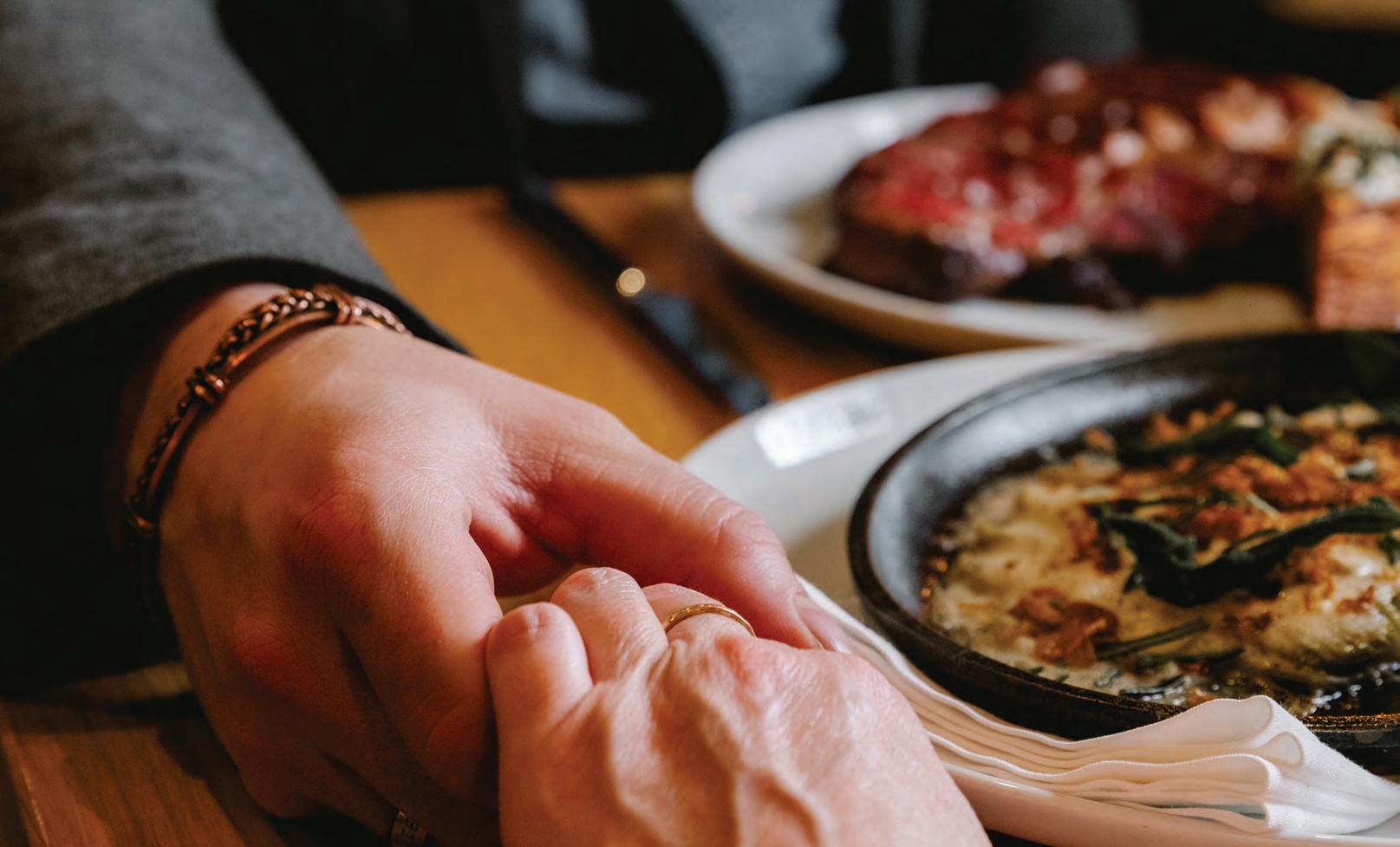
BY BRANDON BARRETT
WHISTLER OFFICIALS moved closer to formally approving the 2025 municipal budget last week, cementing tax rates for the upcoming year.
On Tuesday, Jan. 21, mayor and council passed first three readings of the Resort
Municipality of Whistler’s (RMOW) Five-Year Financial Plan bylaw.
“We’re not here to talk about the content of the budget today,” explained municipal CFO Carlee Price at the meeting. “Those conversations have been lengthy and are now complete.”
After months of back and forth, in December resort officials settled on an 8.25-percent property tax increase for 2025, after RMOW
unpredictability,” she said. “We don’t actually know what’s going to happen. And I think it’s really important that we realize we are at a point right now where we can’t focus on greenhouse gas emission reduction only. We really also have to focus on increasing our resilience and connecting as a community at the same time to be flexible and prepared for all of these unpredictable changes that we’ll be seeing.”
Data backs up Burhenne’s point. According to the United Nations (UN), the world has already surpassed 1.5 degrees of warming from February 2023 to January 2024. A 1.5 degree of warming was the limit set by countries under the 2015 Paris Agreement. Hitting this global temperature increase does not mean the world hasn’t met the agreement’s goals, because the goal is set for long-term
increases over decades, not monthly or yearly. Temperature fluctuations are expected in the short-term because of El Nińo and La Nińas and volcanic activity. However, the UN calls it a warning sign of what’s to come.
Earth warmed by 1.2 C from 2014 to 2023 above the pre-industrial baseline set in 1850 to 1900. Current warming is causing “intensifying extreme weather events, alarming reductions in ice sheets, sea ice, and glaciers, and several mass coral bleaching events, with widespread harms to people, economies, and nature.”
Burhenne pointed to transit and active transportation as means to adapt to climate change, encouraging businesses to provide free transit passes or Evo bike-sharing memberships. The second suggestion she
staff initially recommended a 9.5-per-cent hike. Price broke down what that rate would mean for a variety of sample properties. Owners of a single-family home assessed at $4 million would see a tax bill of approximately $5,981, a year-over-year increase of $456. A condo assessed at $1 million, meanwhile, would pay approximately $1,495 in 2025, an increase of $114 from last year. A Whistler Housing Authority home with an assessed
pointed at was a mitigation strategy used by the RMOW: fuel-thinning and FireSmart.
Next, Wilson tapped Douglas to discuss youth and climate anxiety, asking how they can be empowered.
“I don’t think it’s just young people. I think we all feel it to a certain degree, and I’m not immune to it,” he said.
Douglas highlighted the film he created with Pemberton youth, Sam Tierney, called Sam & Me, and stressed that action and organizing are the key.
“[Saying] ‘we have to solve climate change,’ that’s absurd,” he said. “Like, how are any of us going to solve climate change? You know, the United States, if it chose to tomorrow, probably cannot solve climate change. So, you have to break it down into small pieces that you can

value of $500,000 would pay approximately $748 in property taxes, $57 more than last year. A commercial property assessed at $500,000 would have a tax bill of $3,546, an increase of $270.
“These amounts will only be true if each of these properties appreciate in line with other properties in its category, and if the
chip away at, set some goals.”
In addition, taking time to care for your own well-being when doing the work can include unplugging from the digital realm and getting outside to connect with the mountains.
Campbell and Ward also highlighted connection to the outdoors as important pieces in ensuring Indigenous youth can move from survival to well-rounded lives.
“I’ve been working with Indigenous youth for the majority of my life, and what I’ve really noticed is there isn’t a sense of a fear in climate, whether or not because they’re focusing so hard on surviving,” Ward said. “What we do with our programs is we provide that experience together on the land, so they have that connection to the land, and that fosters that growth of wanting to protect it.” n
Elevateyourheli-skiingadventure with aone-of-a-kind experienceatEagleLodge,whereadrenalinemeetsthe electrifyingenergyoftheHairfarmers.Carvethrough powder-filledslopesbydayandrockoutunderthestars eachnight.
Thisexclusivepackageincludesuptothreeunforgettable daysofheli-skiinginthebreathtakingBellaCoolaValley, followedbyintimateaprès-skiperformancesandanafterdinnerconcertthat’llkeepyoudancingwellintothenight. Limitedtojust14participants.
Fournightsofdoubleoccupancyaccommodationat EagleLodge.
Up tothreeunforgettabledaysofheli-skiing, dependingonweatherconditions,withthreegroupsof fivein astate-of-the-artKoala AW119helicopter. 42,500verticalfeetperpersonofheli-skiing. ProfessionalguideservicesprovidedbyACMGor CSGA-certifiedguides. ReturnflightsfromVancouvertoBellaCoola. Threemealsdaily,plusaprès-skisnacks. Avalanchesafetytraining. Skirentals.
RATE: CA$7,980 +5%GSTanda 2%SustainabilitySurcharge.
TOBOOK: Emailreservations@bellacoolahelisports.comorcall 604-905-4994
PEMBERTON MAYOR MIKE RICHMAN ARGUED THE HOTLY DEBATED INCREASE COULD CONTRIBUTE TO ‘DEATH BY A THOUSAND CUTS’ FOR TAXPAYERS
BY LUKE FAULKS Local Journalism Initiative Reporter
THE SEA TO SKY Regional Hospital District (SSRHD) has asked staff to prepare a 2025 budget with a 50-per-cent tax requisition increase in an effort to pay for new equipment, a potential community services hub in Pemberton’s Harrow Road development and future health-care infrastructure upgrades in the region.
Staff initially recommended a 25-percent increase during a Jan. 29 meeting, which would generate $1,982,166 for the SSRHD in 2025 based on a rate of $3.60 per $100,000 of assessed value. Director Jen Ford made a successful motion asking staff to prepare a budget with a requisition increase of 50 per cent, amounting to approximately $4.40 per $100,000.
“I would far rather smooth the increases over the next several years knowing that big expenses are coming,” said Ford. “And I know it’s tough right now and people are struggling under the costs of everything, but this is something that we’ve underfunded for years.
“If we as this board can put some meaningful money away so that we can be ready for some bigger spends in the next five years, I think that’s a prudent thing for us to consider.”
The SSRHD can’t directly tax properties. Instead, it requisitions member municipalities and the province to tax on behalf of the regional district to meet the revenue needs set out in budgets like the one discussed during the January meeting.
The Sea to Sky has a lower requisition rate than other regional hospital districts with similar populations, including the Sunshine Coast, Alberni-Clayoquot, and Comox Strathcona. Those comparatively lower levels inspired staff to push for a 25-per-cent increase. Deputy director of finance Colin Hudgens noted it would take a 228-per-cent increase in the requisition levels for the SSRHD to match the next highest hospital
PAGE 16
categories appreciate at rates in line with each other. So, grain of salt there,” cautioned Price.
RMOW officials also cemented utilities parcel tax rate and user fees for the year: an eight-per-cent increase to sewer parcel taxes and user fees; a five-per-cent increase to solid waste parcel taxes and user fees; and a four-percent increase to water parcel taxes and fees. In all, the combined utilities charges amount to $1,440, a year-over-year increase of $80.
The RMOW operational budget for 2025 is $110 million and its budget for project work is $38.6 million.
Elected officials had a delicate balance to strike with this year’s budget, wary of adding to Whistlerites’ financial burden at a time of
district’s rate per $100K of assessed value.
Staff are recommending the increase to help pay for two new funding requests for 2025.
The first is Vancouver Coastal Health’s (VCH) request to cover 40 per cent of the cost of a digital X-ray system in the Pemberton Health Centre (PHC) and replacement of portable X-rays in Squamish General Hospital and the PHC—amounting to $814,535 from the SSRHD.
The next project is more tenuous; the Harrow Road Housing Development in Pemberton has requested $1,000,000 from the SSRHD to pay for a new community hub on its main floor. The proposed hub aims to “bring together [Sea to Sky Community Services Society] programs, services and partnership that strengthen people and help build a healthier, more connected and better supported community for everyone.”
The hurdle is the SSRHD is only permitted to make financial contributions to facilities designated as a health/medical facility by the Ministry of Health, according to staff. Harrow Road has not yet obtained that designation, and it’s unclear how far along they are in the process.
SSRHD chair and Squamish Councillor Jenna Stoner raised a concern about uncertainty around whether or not the Harrow Road Project would receive certification, enabling the transfer of funds. If it fails to “get across the line,” the $1,000,000 earmarked for the project would likely sit in the SSRHD’s reserves.
Pemberton Mayor Mike Richman acknowledged the Village of Pemberton and the region at large needs to build up its healthcare capacity, but warned the board not to ignore other tax burdens on residents.
“I think we need to keep affordability in mind here—it’s death by a thousand cuts,” said Richman. “I think we need to think of the cumulative effect [of taxes].
“I totally agree with the direction, but 50 per cent doesn’t feel gradual.”
Read the full story at piquenewsmagazine. com. n
rising unaffordability while eyeing several major costs facing the RMOW in the coming years. The first and most costly surrounds policing: once Whistler’s population officially hits 15,000, an inevitability in the 2026 census, the municipality’s share of the roughly $5.4 million in annual policing costs will rise from 70 to 90 per cent. The second major looming cost is for firefighting, a large chunk of which will go towards staffing the No. 3 Fire Hall in Spring Creek full-time, a decision council greenlit last January. The third major cost is for transit, with staff anticipating the CanadaB.C. COVID Safe Restart grant reserve to dry up by early 2027, foisting another roughly $1 million back onto the RMOW. n

ADVOCATES SAY SPEED LIMIT SHOULD BE LOWERED FROM 80 TO 60 KM/H TO PREVENT ROAMING HORSES FROM BEING STRUCK BY CARS
BY LUKE FAULKS
Local Journalism Initiative Reporter
PEMBERTON VALLEY residents concerned about horses roaming on the highway north of Pemberton have received a long-awaited update. The Village of Pemberton and the Ministry of Agriculture will write to the Ministry of Transportation and Infrastructure, proposing a reduction in the speed limit on the highway from 80 to 60 kilometres/hour.
At a Jan. 21 committee of the whole meeting, Pemberton’s chief administrative officer Elizabeth Tracy told council she and Cpl. James Gilmour from the Pemberton RCMP met with representatives from the Ministry of Agriculture about the issue of roaming horses on the highway.
“The people that we met with generously volunteered to support us in writing a letter that would seek the endorsement of ourselves, the Lilwat Nation, as well as the [Squamish-
Lillooet Regional District] and RCMP effectively advocating to [MOTI] to lower the speed limit on the highway, particularly in the section from the Lillooet River Bridge to the Industrial Park to 60 km/h.”
Council said the proposed decrease in speed limits aims to address the ongoing concern that cars might collide with roaming horses—a regular complaint from community members.
A quick scroll through Pemberton’s Community Facebook group will show videos of frustrated drivers stopped on the highway at night, waiting for the horses to shuffle off the road, and comments demanding a solution. During winter, salt on the road draws the horses out onto the highway, exacerbating the issue.
A crash in 2023 killed two horses, and a separate incident a month later injured both a horse and driver. In 2024, then-West VancouverSea to Sky MLA and former Pemberton Mayor Jordan Sturdy encountered two dead horses outside of his North Arm Farm.
“I pulled out of the driveway at about six o’clock in the morning and there were two dead horses, one with his guts splayed out on the highway,” recalled Sturdy. “The police were there [and there] was a car upside down in the ditch.”

He relayed the situation in a similarly graphic speech to the legislative assembly in March 2024. Concern over incidents like that one, and for general road safety, drove his years-long push to have MOTI lower the speed on that stretch of highway.
In addition to reducing the likelihood of fatal collisions with horses, the road offers a number of threats to drivers, said Sturdy.
“We’ve got gigantic ditches where, if you flip your car over in one of those ditches the wrong time of the year, you are under four feet, five feet of water,” he said. “We have people walking along the side of the road. We have essentially no shoulders [and] bicyclists going back and forth all the time. And we have horses and we have bulls occasionally as well.
“Oh, and bears,” he added.
Part of the appeal of 60 km/hr, said Sturdy, is consistency. The speed limit going into Pemberton is 60 km/h. Once you’re past the downtown core, the limit ramps up again to 80 km/h through the stretch of highway in question before dropping back down to 60 km/h at the Industrial Park and 30 km/h in Mount Currie.
“Here we have one of the most inconsistent speed limits in anywhere I’m aware of,” said
Sturdy. “And I’ve been disappointed to not been able to affect change so far.
“Reducing the speed limit is not going to be a panacea,” he added, in regards to the horses. “It’s going to reduce the risk, but it’s not going to solve the problem”
The horses are not completely wild. They’re owned by Wayne Andrews, a former cowboy and legendary rodeo rider from the Lil’wat Nation. While he was unavailable for comment, he’s previously told Pique his objection concerns the existence of the highway itself.
“It’s always hard,” he told Pique in 2023. “So many horses have been killed. We are being terrorized by the highway. In 1990, people blocked the road because they didn’t want it paved. It got paved anyway. This is the last of our freedom area. Once this is gone, I will leave. I will take these horses and leave.”
The timeline for the letter to MOTI is unclear. The task of drafting the letter is in the hands of the Ministry of Agriculture.
“They are in the process of drafting the letter and when they’re done, CAO will bring it to the mayor for their endorsement, and do the same with the rest of the parties,” Tracy told council. n


WHISTLER IS BLESSED with several great coffee shops. This is good because not only do I love the bean, but tend to get a lot of work done in the noisy places it’s vended. I suspect my tolerance has something to do with all that communal living in the 1970s. A few of my books are dedicated to coffee shops I wrote them in; some have reciprocated by hanging articles I wrote about them on their walls. It’s a symbiotic relationship based on my ardour

BY LESLIE ANTHONY
for java and a shop’s dedication to the art of dispensing it in copacetic surroundings. And that’s where I thought it ended: you keep looking for coffee shops that are better and better at combining these two ingredients. But after stepping into Craft 42 Roasters, a one-of-a-kind coffee shop in a quiet corner of north Kelowna last winter, I found it’s just the beginning, that there’s an entire world of coffee as experience
Craft 42’s bright and airy interior ensures minimal deterrence from the task at hand— tasting and enjoying rarified coffees. Even the aroma emanating from a roaster at room’s end plays less as distraction than a focusing element for visitors. Here they’ll find partner proprietors Taylor MacInnis and Aaron Moore—accompanied by the occasional small child—measuring, brewing, pouring and
pulling coffee in a meticulous choreography more reminiscent of science demonstrations than the hustle of get-’em-in-get-’em-out coffee franchises. It’s both refreshing and enlightening—and the story began long before they roasted a single bean.
Number 42, it seems, was the address of a cherished childhood home from which attendant family values of compassion, respect, education and light-hearted play were transmuted into a business philosophy when the pair started an online coffee company dedicated to both the very best of the bean and the very best of intentions. Placing a premium
placing third in 2023’s prestigious Forward Lottery Competition of the world’s best roasters. Shipped a bag of premium green coffee beans from parts unknown to play with, Craft 42 ultimately submitted and was anonymously judged on their interpretation of a roasted product.
That they bested 77 of 80 competitors spoke volumes but didn’t surprise customers used to a menu highlighting competitionquality beans from Brazil, Colombia, Nicaragua, Guatemala, Kenya and Ethiopia that evoke no end of buzzwords in Aaron’s detailed explanations: natural carbonic
“In wine, about 200 flavour notes are detectable to the human palette; in coffee, there are over 800.”
- AARON MOORE
on quality, ethical sourcing and climate action, every roast considered the fairness of the wage of the person who picked the beans as well as environmental impacts of the bag it went in. The ethos was carried forward in the dream of a brick-and-mortar outlet in what proved the perfect spot—midpoint for folks walking, running or cycling the city’s popular Okanagan Rail Trail. That Craft 42 became an immediate respite celebrated by self-propelled locals on foot or bike suited the owners’ environmental outlook, but the main draw was its wide-range of coffee and the way it was handled. Customers understood they were in for a treat.
As local accolades piled up, Craft 42 received international recognition by
maceration… washed thermal shock anaerobic fermentation… tribal-dance stomping. Specific relationships with quality growers are also important, such as venerable Daterra farm in Brazil’s famed Cerrado savannah ecoregion, an icon that leads by example— the world’s only certified B-Corp coffee farm, with a litany of awards and a mandate to become climate-positive. The best part? It’s a relationship you can taste.
If you visit an Okanagan winery you might take a few bottles home with you, but you’re mostly there for the tasting-room experience; ditto flights of different brews served in the booming craft beer scene. And since variables that apply to the nuances of wine and beer— climate, soil, processing—also apply to coffee,
Craft 42’s idea of a coffee-tasting room not only makes sense, but provides a truly unique experience. “In wine, about 200 flavour notes are detectable to the human palette; in coffee, there are over 800,” Aaron tells me, adding, “You can’t untaste a really good coffee.”
And indeed I cannot after sampling toffeetinged Danche light roast from Ethiopia, tropical-fruit forward Granja Parasio 92 Silver light roast from Colombia, and chocolatey medium-roast Daterra Decaf. For a reasonable fee you can enjoy a guided taste of three coffees in a format of your choosing—e.g., pour-over, press, espresso—or the same coffee varietal prepared in three different styles. You’ll learn about tasting notes, farmers, roasting and how to best brew at home. “People are just going crazy over the tastings,” Taylor noted, “because that’s what people can relate to here in the Okanagan.”
The analogy seems apt. “I think 99 per cent of the world has commodity coffee and one per cent specialty coffee,” says Aaron. “We’re not fighting for that one per cent but working within it—exchanging coffee lots and ideas with other roasters. It’s very much like craft breweries—working together to improve everyone’s experience.”
Further odes to sustainability include bringing in your own coffee canister or reusable coffee bags for a discount on beans, or high-quality branded apparel featuring recycled/organic materials and fair wages from female-owned Ungalli Clothing. In the end, however, it’s really all about having more fun with coffee: “We’re basically trying to say, look, it’s really just hot brown liquid,” muses Aaron, “so why not enjoy it as many ways as you can?”
Leslie Anthony is a biologist, writer and author of several popular books on environmental science. n
If you somehow haven’t heard by now, the Invictus Games are on their way.
Between Feb. 8 and 16, more than 550 injured and sick military service members will represent 23 nations across 11 sports across Whistler and Vancouver. Six winter disciplines will join the lineup for the first time: alpine snowboarding and skiing, biathlon, skeleton, cross-country skiing and wheelchair curling.
Originating from the mind of Prince Harry, Duke of Sussex (himself a former gunship pilot with the British Army Air Corps), this event and the affiliated Invictus Games Foundation offer a platform for veterans to discover post-traumatic healing and growth.
In principle, that’s not so different from the Whistler Adaptive Sports Program (WASP) and its goal to help people with disabilities improve their lives through recreation over the past quarter-century.
The charity’s website elaborates: “People here at Whistler Adaptive feel that sport builds socialization, leadership skills, healthy growth and development for everyone, whether they have just acquired a disability or have been active all their lives. By providing access to a vast number of sports across the winter and summer seasons, we are opening doors to endless opportunities and creating new levels of independence for individuals with disabilities.”
We may not always understand what it’s like for adaptive athletes to engage in physical activity. That’s why I decided to put myself in their shoes.
Over two days in mid-January, I tried out modified versions of crosscountry skiing, swimming and alpine skiing under the helpful tutelage of WASP personnel.
Jan. 14 yielded partly cloudy skies and temperatures just above the freezing mark in Callaghan Valley. WASP coach and volunteer coordinator Natalie O’Connor met me at there, at Whistler Olympic Park (WOP), to introduce me to Nordic sit-skiing.
This sport features multiple types of apparatuses tailored to the needs and body proportions of their users. The one I borrowed was essentially a chair with a short backrest bolted to a pair of skis, meant normally for people with limited mobility in their hips and knees and/or those with a lower spinal cord ailment.
Minimal instruction was required for me to start scooting through a pair of parallel snow tracks. I quickly discovered that a modicum of velocity was achievable, even across flat ground, and my seated posture was comfortable. “Sit-skiing is pleasant,” I thought, comparing the deed to a leisurely walk on a sunny afternoon.
Everything changed when I
encountered the first hill.
It wasn’t large by any means. You might send preteen kids down that slope on toboggans without a second thought, and they might soon ask for more exciting fare. Yet O’Connor told me this particular hill was one most of her beginner students found difficult to conquer.
Still, I believed in my ability to traverse this obstacle. I’ve been doing CrossFit for months, and though I must not be mistaken for any kind of competent sportsperson, I’ve developed some strength. Therefore I accepted the challenge… and made it roughly 90 per cent of the way up before my arms fatigued.
Nordic sit-skiing is harder than it looks.
“We have to be aware of energy levels,” O’Connor said. “You look at an incline in a sit-ski and you’re like, ‘OK, that pitch isn’t too steep,’ but once you have to propel yourself to the top of that incline, you realize your muscles burn out pretty quick. We want to push our athletes to a point where they can feel that, but at the same time make sure it’s still a positive experience.”
The day concluded with a few jaunts down other modestly-sized hills. O’Connor tethered herself to me, essentially acting like an emergency brake astride conventional skis, but even then I picked up a little too much momentum and botched a turn. My respect for sit-skiers grew further.
“We don’t focus on the disability. We’re all about the sport and the activity,” said O’Connor. “Our focus is the athlete. They can push themselves if they want to look towards the competition route or just stick within recreation, but it’s all about giving them empowerment so they can ski with friends and family. They can still participate in the sports they used to, or they can participate in sports their peers do already.”
Skiers might occasionally encounter their adaptive counterparts at a public venue like WOP and make well-meaning remarks like “Good job!” and “Nice work!” Folks with disabilities don’t necessarily like being treated this way.
“As a coach, when I am skiing or biking with someone I am focused on making sure that they are able to participate,” O’Connor elaborated. “They’re just doing their sport. You could be with a coach or buddy—visually impaired skiers will have someone guiding them—but we’re breaking barriers down [by treating athletes with disability similar to those who aren’t disabled].”

WASP communications lead Jennifer Brown adds: “Adaptive equipment is just another tool in a toolbox … in the same way we might use a knife and fork to eat or wear glasses for our sight. Tools exist that enable you to carry on skiing if you’ve had a knee operation or a stroke, or if you have dementia. It’s just another way of keeping on doing the things that people love.”
The word “disability” may bring some form of physical ailment to mind: a hereditary limitation, wound or


amputation. However, much of WASP’s clientele is neurodivergent. In other words, their brains are wired differently from those of the average Joe.
Examples of neurodivergence include autism spectrum disorder (ASD), Down syndrome and attention-deficit hyperactivity disorder (ADHD).
Brown is experienced at coaching these kids in the pool when she’s not doing administrative work with WASP. I joined her at Meadow Park Sports Centre to learn more.
That meant we didn’t start swimming laps right away. Neurodiverse individuals often require a sensitive and intentional approach from their mentors in order to thrive.
“Research has shown us that if you have autism as a child, you’re 160 times more likely to be at risk of drowning and the reasons for that are multiple,” explained Brown. “It can be [related to] missing swim lessons and the opportunity to learn when you’re a kid because it’s harder to participate in a more rigid lesson.
“The other side of it: water is actually a sensory respite for many people with autism, so there’s a pull to the water at the same time as it being a risk. This combination of circumstances means that it’s even more important to have an adaptive program which can support people with ASD and other neurodiversities.”

Routine and repetition are vital for many of Brown’s pupils. Once they become accustomed to doing the same things over and over, they gradually internalize what is taught. Peaceful surroundings are also key, for some are overwhelmed by excessive noise and stimulus.
Therefore, I took my cues from Brown. First we kicked our legs in the pool at varying speeds before easing into the water and slowly spinning in place (which can be a self-soothing or “stimming” act for the neurodivergent). We lowered our mouths beneath the surface and worked up to full facial immersion.
It was only after all those steps that Brown gave me a pair of scuba fins and we finally got to swimming laps.
Visual aids like cue cards and floating toys may be used to transfer information to nonverbal or low-functioning students. However, advanced thinking and engagement can be necessary in other cases.
“With some of the kids I teach in Squamish who have high-functioning autism, [we focus on] understanding and comprehension from an intellectual perspective,” Brown said. “We’ll take time to work out the physics of swimming, why we have buoyancy, how we gain buoyancy by using our lung capacity and all of the nitty-gritty. Once you’re able to illuminate that universe of swimming, a positive association to the sport is grown.”
Neurodivergent people don’t always lag behind in every respect. They can also be blessed with strengths, like the ability to picture three-dimensional objects or grasp scientific ideas to a markedly above-average extent. Such trends are comparable to variances amongst neurotypical persons: some are naturally better at math and others naturally better at writing, etc.
No matter which way you look at it, physical disability is just one piece of the puzzle.
“One of the amazing things about the Invictus Games is that it shines a spotlight on the breadth of abilities in the world, and the fact that not all disabilities can be seen—as in the case of [post-traumatic stress disorder],” opined Brown. “Just because someone’s not in a wheelchair doesn’t mean there isn’t something they need an extra bit of support with.”
Whistler is known, arguably above all else, as a downhill skier’s paradise. I would have been remiss not to give four-track skiing a go.
Brown accompanied me to the Jeff Harbers Adaptive Sports Centre at Whistler Mountain’s Olympic Mid-Station, where we rendezvoused with instructor Rebecca Warren. On top of her employment at Whistler Blackcomb (WB), she serves with WASP during summer months. The relationship between WB and the charity puts 80 adaptive coaches into service each year.
Warren and her colleagues tend to deal with lots of internationals who visit for days or weeks at a time. Programming varies to suit the needs and desires of clients.
“It is a hugely important thing for us to have those types of partnerships,” said Brown. “At the end of the day, Whistler Adaptive Sports Program is a small charity with seven staff, and it’s through our partnerships that we’re able to deliver more lessons—to reach more people—thanks to Whistler Blackcomb and [the Vail Resorts Epic Promise Foundation].”
Adaptive skiers make use of outriggers: essentially a pair of handheld skis that help with
balance, turning and velocity control. These ski blades can be deployed in an upright posture to facilitate walking or dropped into a lateral orientation when it’s time to go downhill with the pull of an attached string.
There are two main kinds of adaptive athletes in this context. Four-track skiers wear two skis on their feet, while three-track participants employ just one.
“Three-track is generally going to be for someone who’s an amputee that hasn’t got their prosthetic on … getting used to steering with one foot. Outriggers are there as extra balance,” Warren explained. “Four-track can be anyone who’s had a stroke, weakness on one side, cerebral palsy, anything limiting [lower-body] range of movement. If we’re struggling with stand-up skiing, we can use outriggers to assist our turns.”
I’ve only skied four times the conventional way, and I quickly learned the classic snowplow: pointing the tips of one’s skis inward as a means of slowing down. Warren didn’t let me rely on this basic technique because many of her clients can’t pivot their legs freely. Instead, fourtrackers brake and turn mainly by pointing their outriggers to the left and right.
I couldn’t follow Warren’s instructions particularly well. Snow-plowing felt like second nature, as did moving my legs independently to affect my direction.
Three-track skiing was even harder. Due to a mediocre sense of balance, I struggled to remain upright after one of my skis had been removed. Turning reliably, even down a very gentle slope, was out of the question.
“One of the things about adaptive sports is sometimes they can actually be even more committing [than conventional sports],” Brown remarked. “If you get on an electric-assisted adaptive bike, you’re low to the ground, taking corners with a big, heavy piece of equipment— same as skiing. Well, that’s a heck of a lot of equipment and it can be pretty nerve-racking.
“For someone who is able-bodied to have that insight into adaptive sports, you’ll know what it really means to step outside your comfort zone, challenge yourself, and how transformative that experience can be.”
Wayne Katz understands exactly how liberating adaptive sport is for those willing to put in the effort.
Seven-and-a-half years ago, Katz was diagnosed with leukemia. His right leg was amputated above the knee, and at first he didn’t have the mindset to return to physical activity. Understandable… but fortunately, he kept going.
The longtime Whistlerite doesn’t remember how he first got connected with WASP, but he’s been swimming for about three years and mountain biking for almost as long. Katz didn’t feel comfortable with stand-up Nordic skiing, but others talked him into sit-skiing—which he’s now done for approximately 12 months.
Not bad for a 68-year-old cancer survivor. Not bad at all.
“I’ve always been that kind of character. I’ve been strong-willed and [this disease] isn’t going to beat me. I’m going to beat it,” Katz declared. “I’m competitive when it comes to business, when it comes to anything, so I pushed myself. As I saw myself get stronger, I thought, ‘OK, I’m going to start competing.’ [I did] a triathlon two years ago, and last year was the open-water swim [across Okanagan Lake]. Now I’m thinking of bike racing. I used to do it. I’m going to do it again because they allow e-bikes.”
Tears come to Katz’s eyes when he thinks about his support network, especially swim coach Bronwyn Hill.
“I want to start off by thanking the person who has shown up twice a week for three years as a volunteer. I get emotional because—”, Katz takes a few moments to compose himself before continuing, “—she puts in time and effort to be here for me. Not only is Bronwyn here to encourage me, but she has a background in swimming and makes the effort to try and improve my technique.
“Then I’ve got Janice Tedstone and Bill Moore, who have started to train me in sit-skiing. They give me all these pointers on how to be better at it, and they’re so encouraging. [WASP] is full of amazing, amazing people … those who are paid through the organization and the volunteers. They just go above and beyond to assist you in getting better at something you’re interested in.”
Brown confirms volunteers form the backbone of WASP. As of this writing, 108 individuals give their time without pay to support members of the adaptive community, and it’s a mutually beneficial experience.
Testimonies like Katz’s represent the soul of the Invictus Games. It doesn’t matter what your disability is: the point is how you can overcome it and learn something about yourself in the process. For this reason, these Games stand apart from other major sporting events.
All of WASP’s hands are on deck to help. Much of the charity’s equipment will be used by competitors, and some personnel will be in Vancouver supporting athletes. Whistler Olympic Park and the Jeff Harbers Centre are of course going to be key hubs of activity.
When asked how she hopes the Invictus movement can further the conversation regarding disability, O’Connor said: “Just to have the population of Whistler or those around the area be aware of adaptive sports and realize it’s not only about physical disability. It’s also about neurodiversity, PTSD, recovery and rehab.
“You can be any age or any experience level to come and get involved. For some who are neurodiverse, it could be that just putting on a ski boot is [a huge achievement]. For people with physical disabilities, it could be their first time in a sit-ski after a spinal cord injury. From that, you just build.”
Brown likewise believes the Invictus Games will shine an essential spotlight upon WASP and its values. People can’t try adaptive sports if they don’t know about them, but exposure begets demand.
At least a few folks who watch the Games today might find themselves checking out a new pastime tomorrow. n

BY DAVID SONG
WHAT’S BETTER than one ski cross victory on a given weekend? Two, of course, and Marielle Thompson just pulled it off.
Roughly 24 hours after topping the podium in Veysonnaz, Switzerland, Thompson did it again under clear blue Sunday skies for her 35th World Cup win and 72nd medal in total. She had to overcome an inauspicious beginning, however: losing her pole in the start gate.
The Whistlerite remained poised to earn another cowbell, the prize normally awarded to Veysonnaz champions. Daniela Maier netted silver for Germany, and bronze ended up with Swiss contender Fanny Smith.
“I just wanted to leave everything out on the track and I think I did that, so I’m super happy,” Thompson said in a press release, maintaining third in the overall standing with 581 points. “This course, if you lose any speed, it’s kind of the end. So in the final, it was everything I had left in the tank and it paid off. Unfortunately I dropped my pole, but I did a phantom pole and it gave me some extra speed, I think.
“Who needs a pole if you have two
cowbells, right? I guess I need some cows. I already have a cattle dog.”
Jared Schmidt clocked in for third: his first podium since a Dec. 12, 2023 win in Innichen, Italy. The Ottawa native now owns half a dozen World Cup medals.
France’s Youri Duplessis Kergomard led the men’s race, with Swede David Moaberg in the runner-up hole.
“It feels amazing; it’s been a minute since I’ve been on the box, and I’m feeling really
Sherret remains atop Crystal Globe rankings with 595 points.
She commented in a release: “I’ve kind of been working on staying relaxed. I have a bit of a tendency to get a little uptight, a little tense, and not breathe when I make mistakes, but just working on staying in the moment and having fun [this season] because racing is a lot of fun.”
Meanwhile, Howden is up to 406 points and fourth overall.
“Who needs a pole if you have two cowbells, right? I guess I need some cows. I already have a cattle dog.”
- MARIELLE THOMPSON
good mentally right now,” Schmidt stated after the race. “I didn’t think too much about the skiing; it was kind of automatic and felt like my old self. It was nice to battle my way through, take it heat by heat, and just remember to breathe and have fun with it.
“I’m really happy with my performance, but I’m also happy with my mental performance. It’s a fun weekend. I love it here; you can’t ask for a better race environment.”
India Sherret and Reece Howden each grabbed bronze on Saturday but were relegated to fourth come Sunday. However,
It was a titanic weekend for Canadian moguls athletes on home snow.
Maia Schwinghammer soared to her firstever World Cup triumph in Val St. Côme, Que. Judges awarded the Whistlerite 80.07 points on Friday as runner-up Jaelin Kauf (77.85) and third-place Olivia Giaccio (77.71) got on the board for Team USA.
“Wow, first [win] in front of a home crowd, I can’t believe it. I’m so happy,” gushed Schwinghammer in a press release. “Just to
be able to improve on my runs as I went throughout the day, I’m so happy with my skiing and how far we’ve come as a team.
“Coming out this morning I was definitely the most nervous I’ve been for a World Cup, I think, ever. It was my first time qualifying first as well. I was a little bit uneasy, definitely. I was able to calm those nerves and ski how I’ve been training.”
That same day, Mikael Kingsbury emerged victorious on the men’s side (87.42) and got to share the limelight with compatriot Julien Viel in second (80.56). Finnish athlete Olli Penttala rounded out the top three (78.28).
“I’m super stoked about my skiing tonight and what a night to be a Canadian,” Kingsbury told reporters. “It feels amazing, and it’s pretty silent up there so the crowd is the only thing you can hear. When you’re dropping last at Val St. Côme, it’s quite special.”
The former Olympic champion wasn’t done there. He won dual moguls on Saturday for an unprecedented 96th World Cup gold medal, reinforcing his status as history’s most dominant moguls skier. Benjamin Cavet of France and American Nick Page took silver and bronze respectively.
Kingsbury’s fourth straight win (and sixth in seven events) gets him to 712 overall points: 229 ahead of his closest opponent Cavet. Schwinghammer wound up sixth in the dual discipline and remains third in the overall ranking. Kauf, Anastassiya Gorodko and Perrine Laffont podiumed in that order. Stay tuned to piquenewsmagazine.com for results on all of Whistler’s athletes. n
BY DAVID SONG
ALEX CLAPIN has lived in Whistler for about two-and-a-half years to date. His passion for making movies began in Colorado as he followed his buddies around skiing and snowboarding in the American Rockies.
Those experiences convinced Clapin to leave his native Perth behind. He witnessed many acts of adrenaline from behind a lens and found himself spending more time outdoors in the process. Eventually the Aussie doubled down on a narrative-focused, documentary style of filmmaking which led him to his latest project.
Ravinos will premiere on Feb. 26 at the Vancouver International Mountain Film Festival (VIMFF).
The Ravinos originated in the 1970s: a time when Vail, Colo. had yet to discover its identity. A group of Midwesterners burst onto the scene, turning eyebrows with their flaming skull patches, unexpectedly high snow-sport prowess and desire to push the envelope. Their St. Patrick’s Day gatherings grew in notoriety, drawing crowds eager to witness (or replicate) their midair manoeuvres.
However, authorities took notice as well. As the greater ski community banned the practice of inverted aerials, law enforcement departments ordered the Ravinos to shut down. The flame was doused… but much like a smouldering ember at an improperly-tended campsite, it was not extinguished.
Some three decades later, children began discovering their parents’ old skull-adorned denim jackets and posing questions about them. Eventually they resuscitated the Ravinos movement while adopting a new vision of being ambassadors for their home. Today’s wave of Ravinos can still be found sending backflips down a beloved 20-foot cliff gap dubbed the “Wailer.”
A handful of Clapin’s friends knew the Ravinos, and he eventually got to ride with them.
“They’re all incredible skiers and snowboarders,” Clapin said. “You see them around the mountain and just wonder what they’re all about. There’s this bit of an aura around them. I just love the camaraderie in the group, the culture and traditions that they celebrate, and the way they support progression within each other.”
Both Vail residents and Whistlerites are likely to complain about controversial corporate management in their backyards. They also love their homes with an unbridled fervour.
The Ravinos’ signature iconography may be reminiscent of a biker gang, but they give back to the municipality of Vail by fostering future generations. Its members coach local youths who can’t wait to get “patched in” while looking out for people of

CULTURE WARS The Ravinos are a ski and snowboard counterculture from Vail, Colo. known for their distinctive skull-patched jackets.
PHOTO BY @CARLY_FINKE
all backgrounds. Whether it’s helping folks overcome injury and addiction or consoling those who’ve tragically lost loved ones, the Ravinos are there.
“The Ravinos’ ability to uplift not just their own, but everyone around them, resonated deeply with me. Their culture of unwavering support, progression, and camaraderie creates a sense of belonging that extends far beyond the mountain,” said Clapin. “Witnessing their support first-hand, and the ripple effect it has on other Ravinos and the local community, I hope this film captures just how vital these groups are in fostering resilience and keeping the soul of ski-town culture alive.”
This gang’s love of on-mountain progression mirrors its love of people, and the attitude is contagious. Even Clapin found himself attempting things on his snowboard he wouldn’t have otherwise, including a series of log rails elevated several metres off the ground. He says the Ravinos have built “a great relationship” with Vail.
“As ski towns like Vail and Whistler evolve under corporate influence, groups like the Ravinos are vital in preserving the spirit of local communities,” Clapin added. “They embody a counterculture that values progression, freedom, and creativity: principles that shaped these towns into what they are today.
“It’s important for the Ravinos to invest in the local community to ensure that a space remains for future generations to push boundaries, express themselves and experience the same sense of belonging that the previous generations did. Otherwise, ski towns risk losing the raw energy, character and soul that made them so incredible in the first place.”
Tickets and more details about Ravinos can be found at vimff.org/show/ski-snow-show. n
NEW!!

inCheakamus
SpecialistSportsPhysiotherapists andalso... Freeparking rightoutfront
Concussionrehabilitation Sportsandspinalphysiotherapy Directinsurancebilling
Call6049620555 to make anappointmenttoday. g 'wekeepyouplaying'

53e CHAMPIONNATDUMONDEFILDELUGE
WhistlerSlidingCentre /4910GlacierLane,Whistler Centre dessportsdeglissedeWhistler/ 4910,alléeGlacier,Whistler
luge.ca/wc2025
Tickets $10/day •$25/3days Billets



RaceTimes Programme:
Thursday/jeudi February 06 février
Races/épreuves: 10:30- 12:45
Awards/prix: 13:00
Friday/vendredi February 07 février
Races/épreuves: 14:00- 19:30
Awards/prix: 20:30
AprèsLuge
Saturday/samedi February 08 février Races/épreuves: 13:45- 17:45
Awards/prix: 18:30
AprèsLuge
Opening Ceremonies Wednesday, February05at19:00. Locatedinthe VillageSquareon theVillageStroll. Freeadmission!
AprèsLuge
Friday/vendredi 14:00- 20:30
Saturday/samedi 13:45- 18:30
Cérémonies d'ouverture Mercredi05 fevrierà 19h00. SituésurlaPlaceduVillage, PromenadeduVillage.Entréelibre!
•The Hairfarmers(live band) /Concert parThe Hairfarmers
•GibbonsBeer Garden /Brasserie-terrasseGibbons
•Concession /Restauration
VenueAccess/Accèsauxlieux
Access viaExcalibur Gondolamid-station.Noparkingonsite Skiconciergeonsite
Accèspar télécabine Excalibur, stationintermédiaire
Pasdestationnementsurplace.Conciergeriedeskisurplace.


CHEF JULIAN OWEN-MOLD’S SHARE MENU DRAWS INFLUENCE FROM COASTAL CUISINE NEAR AND FAR
BY BRANDON BARRETT
JULIAN OWEN-MOLD , the Hilton Whistler’s executive chef, has been thinking about what a renovated Cinnamon Bear could look like for quite some time.
“I’ve been waiting for this renovation for the 12, 13 years I’ve been here,” the chef said of the hotel’s sports bar. “I joined the Hilton from Nita Lake and the GM back then said, ‘We’re gonna have a renovation.’ So, this has been a long time coming.”
The Cinnamon Bear officially reopened last week with a modern new look and a playful, revamped menu. The bright space has been completely opened up so the bar area on the lower level now connects to the restaurant on the second level, creating an airy, inviting environment just as well suited to an anniversary dinner as it is to a game of pool with friends. “We are a casual, contemporary place, so we’re not trying to be white-glove fine dining. There are places for that,” said OwenMold. “We want everyone to feel welcome, whether you’re playing pool over some beer and wings or having a tomahawk steak.”
A locals’ haunt since opening in 1982, the Cinnamon Bear has, at least compared to other hotel restaurants around the resort, maintained a certain informal feel, making it a popular spot for après and for catching the latest game. While the hockey jerseys hanging from the ceiling and the addictive maple chili wings are no more, Owen-Mold said it was important the upgraded space maintained the same warm environment the sports bar has long been known for.
“[Hilton GM Chris Vick] wanted to keep
“We went to a Chinese restaurant in Vancouver where it’s all a shared menu,” he said. “That’s the way we enjoy to eat ourselves, in that family style where you get to share everything.”
The tapas menu features standouts such as the Latin American-inspired street corn on the cob, smothered in crema and spongy cotija cheese; muhammara, a vegan Middle Eastern spread made from eggplant, zucchini and walnuts; and the octopus and Humboldt squid anticucho,
“We are a casual, contemporary place, so we’re not trying to be white-glove fine dining. There are places for that.”
- JULIAN OWEN-MOLD
the Whistler tradition of Cinnamon Bear,” said Owen-Mold. “We really wanted to keep that overall good vibe.”
Owen-Mold contributed to the good vibes through his new family-style menu, which features a range of share plates inspired by coastal cuisines “from Peru up to Alaska,” he explained.
Owen-Mold said he developed the menu alongside Vick, the Hilton’s GM, over several dinners the two enjoyed together in Vancouver.
served with aji mirasal chile, adobo, crushed marble potatoes and red chimichurri. The large plates menu serves up a rolled trofie pasta dish with basil, pesto, potatoes and green beans; an herb-marinated, salt-brick chicken in romesco sauce; and a lamb porterhouse chop with smoked sunchoke purée, rosemary and garlic.
For groups and gargantuan appetites, there’s also the extra-large plates menu, featuring the aforementioned long-bone,
PEI tomahawk steak; a full side of cedarsmoked B.C. salmon; and, one of Owen-Mold’s personal favourites, a whole Dungeness crab cooked in tamarind, ginger and garlic, on top of crab-fried rice.
“I love the crab. You have to be ready to get sticky fingers, which I am,” he said. “Dungeness crab is like the West Coast’s version of lobster. It’s our gem.”
The upgraded Cinnamon Bear also prides itself on its steak. All cooked on a cast grill and sliced to share, there is the eight-ounce bavette angus beef steak; the eight-ounce New York-style striploin from Alberta’s Macleod’s Leap; and the 10-ounce ribeye from the Okanagan’s 63 Acres Ranch.
“I tried to put a spotlight on different places for beef. There are amazing beef producers everywhere,” Owen-Mold said. In a nod to its sports-bar past, there is also a full bar menu featuring classic pubfare with a contemporary twist. The cocktail program, meanwhile, takes a similarly playful approach. Highlights there include the black peppercorn-infused gin Garden Tonic; the Green Inferno, featuring chili-infused tequila, green chartreuse, St. Germain, lime, basil and agave; and the London Cloud, a gin cocktail with Earl Grey syrup, lemon juice, cream and egg white. “[The bar team has] thought about the fun and interesting aspect to cocktails, not just to elevate but to also give a bit more diversity for the guest,” Owen-Mold said. Cinnamon Bear is open daily from 7 a.m. to midnight. n




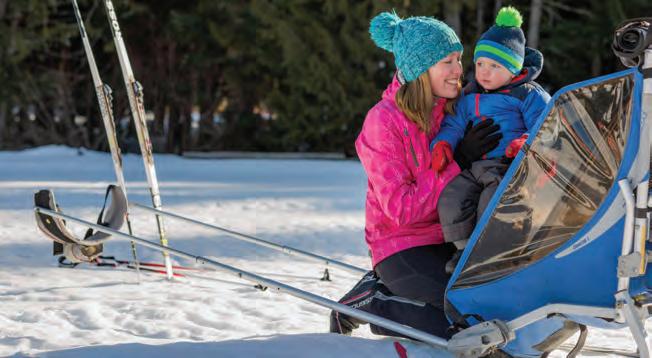







VIVALDI SHOWCASE IS SCHEDULED ON FEB. 15 AND A COLDPLAY TRIBUTE FOLLOWS MARCH 22
BY DAVID SONG
THE CANDLELIGHT Concerts made their Sea to Sky debut on Jan. 10 with a Tribute to Taylor Swift. If you enjoyed that performance or were disappointed to miss it, fear not: more is on the way.
Candlelight’s February show in the Maury Young Arts Centre will feature the time-honoured repertoire of Antonio Vivaldi, followed in March by a Tribute to Coldplay.
“You have a beautiful setting, which is 2,000 LED candles. I think that plays a big part in getting people through the door—a big visual element everyone can understand and look forward to just by seeing a picture or an ad,” explains Andrew Bryan, Candlelight team lead in the Canadian market. “The concerts are also pretty short: one hour. It’s not like committing to a three-hour symphony or anything like that.”
Having launched in Canada four years ago, Candlelight is realizing global success
with past events in more than 150 cities. The brand is known for selecting memorable venues that are interesting to look at or reflect a host city’s cultural heritage: from outdoor amphitheatres under the stars to landmarks such as the Eiffel Tower, Niagara Falls, the Atomium in Brussels and Dubai’s Burj Al Arab Jumeirah.
The Listeso String Quartet will be on hand to bring Vivaldi and Coldplay to life in Whistler.
“It’s amazing the amount of talent and training these musicians have. They’ve really dedicated their whole lives to perfecting their craft,” Bryan says. “My hope is that when you see them for an hour, you’re left definitely
“We’re really unifying everybody under things that we all enjoy.”
- ANDREW BRYAN
A press release elaborates that Candlelight partners with outstanding local performers to “democratize access to classical music.” In conjunction with its unique aesthetic, the series is known for highlighting traditional composers like Vivaldi, Wolfgang Amadeus Mozart and Frédéric Chopin alongside mainstream superstars like ABBA, Queen, Ed Sheeran and more.
This philosophy seems to be fruitful. Bryan notes roughly 80 per cent of Candlelight’s guests had not previously witnessed a classical concert.
wanting more. What they bring to the table is a ton of versatility, incredible skill and good chemistry with each other.”
When asked about the challenge of adapting material from both classical composers and the well-known musical acts of today, Bryan replies with: “That’s really a testament to the technical skill of not only our musicians, but our arrangers as well. I think we’ve been able to really explore the versatility of these classical instruments and arrangements to see how it can actually cross through different genres.”
Bryan has hoped to bring Candlelight to
Whistler for some time now. He believes it’s an iconic town with a diverse nightlife that has room for more options, and according to him January’s Tribute to Taylor Swift elicited a warm reception at the “intimate atmosphere” of the Maury Young.
Going forward, Candlelight’s fans can expect a greater diversity of instrumental arrangements (like jazz bands) to reach the series’ touring destinations. New programs showcasing more beloved artists from across history are also in the works.
“We’re really unifying everybody under things that we all enjoy,” says Bryan. “That amazing visual experience … to that warm atmosphere, and the same thing can be said about music. These are undeniable things that everyone around the world can relate to, and it really does cross borders and cultures very easily.
“We value our audiences’ feedback a lot, so if anybody’s looking [to voice] where they would like to see Candlelight, or if they have any suggestions, we love to hear from them.”
The Vivaldi concert is scheduled for Feb. 15 at both 6:30 and 8:30 p.m., while the Coldplay event runs March 22 with the same showtimes. Find tickets and details at artswhistler.com/calendar-upcoming/ fever-exclusive-candlelight-featuringvivaldis-four-seasons-and-more. n







TheResort municipality ofWhistler(RMOW)will be accepting Community EnrichmentProgram(CEP)applicationsfrom community groups looking for financial assistance for2025.TheapplicationperiodrunsfromJanuary 24 to February14,2025,
TheCEPprovidesfunding to not-for-profitorganizationsor societiesbased withinWhistlerthat are considered by Council to be contributing to the generalinterestand advantageofthemunicipality.The categoriesinclude ‘Environment’, ‘SocialServices’, ‘Community Services’, ‘RecreationandSport’ or ‘ArtsandCulture’
Eachinterested community groupis required to complete aGrantApplication Formandpresent to Council at a CommitteeoftheWholeMeetingon February25,2025.Allapprovedfundingwillbeissuedno laterthanApril30,2025.
GrantApplication Formsare available at www.whistler.ca/cep or at the receptiondeskoftheWhistlerMunicipalHall,Monday to Friday,from8a.m. to4:30p.m.
Pleasesubmitapplicationto: LegislativeServicesDepartment,RMOW 4325Blackcomb Way Whistler,BCV8E0X5
Phone: 604-935-8114
Email: corporate@whistler.ca
Completedapplicationsmustbe received by 4p.m. February14,2025.No late applicationswill be accepted.
To learnmore,visitwhistler.ca/cep
Resort MunicipalityofWhistler whistler.ca/cep










EIGHT FEMALE MUSICIANS WILL HEADLINE ON MARCH 8 ALONGSIDE THE HANDSOME MEN TO RAISE FUNDS FOR PEARLSPACE
BY DAVID SONG
A NIFTY LINEUP of locals will be on hand at Whistler’s next International Women’s Day (IWD) concert, March 8 at Dusty’s Bar & BBQ: Jeanette Bruce, Laura Nedelak, Robyn Forsyth, Izumi Inoue, Rachel Lewis, Mom Jeans and Steph Lundy.
Rounding out the night’s talent are the Handsome Men, Soul Club, DJ Lon and Foxy Moron. All proceeds will go towards PearlSpace, a corridor non-profit dedicated to preventing gender-based violence and helping survivors of abuse.
Tickets sold out five days after they became available, but event organizer Tony Horn wants people to know what’s going on regardless.
“I’ve been on the PearlSpace board of directors for almost 10 years now … and I probably came on when it was made apparent to me that one out of four Canadian women will experience some sort of sexual harassment or sexual assault in their life,” says Horn, who also plays for the Handsome Men. “Mark Carney said the other night on Jon Stewart’s show that we’re the best country in the world. I’d like to think we are, but with that kind of statistic I don’t think we are.
“We started this concert last year because we as a band wanted to celebrate women as men: women’s songs, women singers, bringing attention to that as best we could without stepping on their toes on Women’s Day.”
Whistler, has had a slightly slow uptake with [people still thinking of] the Howe Sound Women’s Centre,” Horn says. “It’s been a bit of a disconnect, so this event and some other events we’ve done are about promoting awareness of PearlSpace.”
In 2024, the Handsome Men held their first IWD concert at Alpine Café: playing female-written or popularized songs while inviting four ladies (including Bruce) on stage as well. Things culminated in a joint tribute to the Highwomen, a country music supergroup featuring Brandi Carlisle, Maren Morris, Natalie Hemby and Amanda Shires.
It went well, to say the least.
“That was the first time I had been in the newly renovated Alpine Café,” recalls Bruce. “Seeing it absolutely jam-packed. By the time I showed up, they wouldn’t have let me through the doors if I wasn’t a performer. I work at the [Whistler Public Library] so I interact with the public a lot, and there was so much chatter about the event. I was really excited when Tony let us know we were going to be at Dusty’s this year so we could fit even more people in.”
‘GET MORE WOMEN INVOLVED’ Each of the upcoming show’s eight female musicians will present two pieces of music. Some plan to collaborate with the Handsome Men on a few choice songs.
Whistler’s Premier Visitor Magazine Since 1980 With distribution in Whistler hotel rooms, stores & stands in the Sea to Sky, hotels & tourist centres in Vancouver, plus to North & West Vancouver residences.
Call Catherine today to book your combined print and digital ad. 604-932-1672 cpower@whistlermagazine.com /whistlermagazine whistlermagazine.com
Always out on time - offering 6 full months of advertising!
Plus our new digital spotlight, getting above average reach and geotargeted marketing for each advertiser’s online profile.

According to Nedelak, Whistler’s inaugural IWD fundraising event was held in 2015 at Black’s Pub with Susan Holden as the original organizer. Dusty’s Bar hosted the next two before the 2018 and 2019 editions went to the Maury Young Arts Centre. Horn and company are responsible for reviving the show after the pandemic.
“Whistler has done a great job of celebrating International Women’s Day over the years,” Bruce remarks. “We’re so lucky to have an organization like PearlSpace that is doing amazing work in our community. Even though our resort town is a playground for a lot of people, others are still living their real lives here—which means women are still being impacted by domestic abuse, assault, harassment, all of these things.”
Formerly known as the Howe Sound Women’s Centre, PearlSpace changed names in September 2023 to better reflect the scope and essence of its mission throughout the Sea to Sky area. However, not everybody kept up with the rebrand.
“I think that name change, especially in
Anticipate Soul Club to kick the festivities off with a set of 1970s-era ladies’ soul music (think Aretha Franklin). Don’t forget about DJ Lon and Foxy Moron’s nightcap, which will have a gender equity flavour to it as they alternate behind the turntables.
“The big thing we wanted to do first of all was to get more women involved,” explains Horn. “For myself personally, it feels important for men to show reverence toward women on Women’s Day and really promote that equality piece. The other thing: I feel like Canada’s in an existential crisis right now, and what’s going to pull us out of that is community.
“We don’t have churches in Canada anymore, really. We don’t have a way for people to gather, share views and share love for something. I think the more that we do on a small scale, [the more it will] strengthen our country bit by bit.”
Bruce adds: “In a small town like this, it can also be hard to reach out for that kind of help [regarding gender-based abuse] if you’re worried you’re going to know somebody on the other end of the line. Reducing stigma around these things and knowing we have this great organization PearlSpace offering services to people here … we do kind of need a reality check.”
Although the IWD concert remains sold out as of this writing, Horn encourages people to get on the waitlist just in case. n










BY ALLYN PRINGLE
WHEN GLEN CREELMAN arrived in the Whistler area in 1960, it wasn’t for the skiing or fishing. Creelman moved to Alta Lake (as it was known at the time) to work for the Pacific Great Eastern Railway (PGE) as a communications lineman, maintaining the telephone line and new microwave station.
Glen had recently graduated from technical college and his arrival at Alta Lake in April was newsworthy enough to be remarked on in the Alta Lake Echo, the newsletter of the Alta Lake Community Club, which stated, “our new telephone lineman is young, handsome, single Glen Creelman.”
Over the following months, as he became part of the small Alta Lake community, his comings and goings and activities were also reported on in the Echo, including when his family came to visit, when he bought a canoe, and when he started organizing softball teams for Alta Lake residents and the nearby logging operations. As a resident of Alta Lake, Creelman was a founding member of the Alta Lake Volunteer Fire Department along with Dick Fairhurst, Doug Mansell, and Stefan Ples (he served as assistant chief), and a founding member of the Alta Lake Sailing Club.
As the communications lineman, Creelman was responsible for looking after the microwave station on Whistler Mountain.
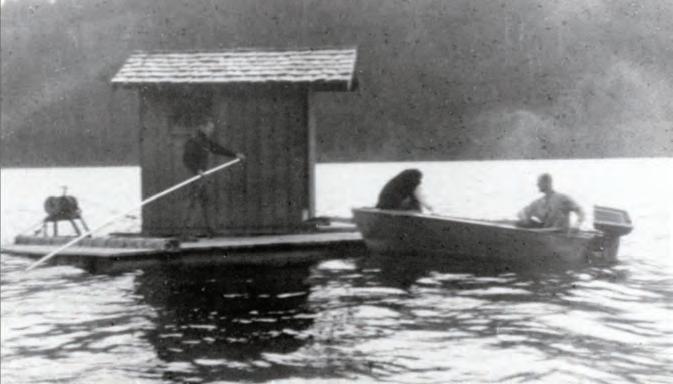
The road up to the station (now known as Gondola Way) could be driven up in his vehicle for much of the year, but in the winter Creelman was given a Tucker snowcat to make the journey. In an interview in 2023, Creelman described this snowcat as “hopeless” and recalled that he would often park it, put on snowshoes, and then walk most of the way up to the station. He was later given a better machine, which he called “Little Tucker,” that could make it all the way up to the station.
As one of the few people in the area with
ARIES (March 21-April 19): The world’s largest mirror isn’t an actual mirror. It’s Bolivia’s Salar de Uyuni salt flat, a vast area that’s almost perfectly flat. After a rain, a thin layer of calm water transforms the surface into a perfect reflector that can be used to calibrate observation satellites. In these conditions, it may be almost impossible to tell where the Earth begins and the sky ends. I foresee metaphorically similar developments for you during the coming weeks. Boundaries between different aspects of your world—professional and personal, spiritual and practical— might blur in interesting ways. A temporary dissolution of the usual limits may offer you surprising insights and unexpected opportunities for realignment. Be alert for helpful clues about how to adjust the way you see things.
TAURUS (April 20-May 20): From day to day, glaciers appear static. But they are actually slow-moving rivers of ice that have tremendous creative power. They can make or reshape valleys, moving tons of dirt and rock. They pulverize, grind, and topple trees, hills, and even mountains. New lakes may emerge in the course of their activity. I invite you to imagine yourself as a glacier in the coming months, Taurus. Exult in your steady transformative power. Notice and keep track of your slow but sure progress. Trust that your persistence will ultimately accomplish wonders and marvels.
GEMINI (May 21-June 20): In recent weeks, have you stirred up any dynamic fantasies about exotic sanctuaries or faraway places or mercurial wild cards? Have you delivered enticing messages to inspiring beauties or brave freedomfighters or vibrant networkers? Have you been monitoring the activities of longshots or future helpers or unification adepts who might be useful to you sooner than you imagine? Finally, Gemini, have you noticed I’m suggesting that everything important will arise in threes—except when they come in twos, in which case you should hunt for the missing third? PS: When the wild things call to you, respond promptly.
CANCER (June 21-July 22): Archaeologists found two 43,000-year-old flutes in Germany. Constructed of mammoth ivory and bird bone, they still produce clear notes with perfect pitch. They were located in a cave that contains ancient examples of figurative art. Some genius way back then regarded art and music as a pleasurable pairing! I propose we make these instruments your power symbols for the coming weeks, Cancerian. May they inspire you to resuscitate the value of your past accomplishments. May you call on the help of melodies and memories that still resonate—and that can inspire your future adventures! Your words of power are regeneration, revival, and reanimation.
LEO (July 23-Aug. 22): It’s your unbirthday season, Leo— the holiday that’s halfway between your last birthday and your next. During this interlude, you could benefit from clarifying what you don’t want, don’t believe, and don’t like. You may generate good fortune for yourself by going on a quest to discover rich potentials and stirring possibilities that are as-yet hidden or unexpressed. I hope you will be bold enough to scan the frontiers for sources of beauty and truth that you have been missing. During your unbirthday season, you will be wise to gather the rest of the information you will need to make a smart gamble or daring change.
VIRGO (Aug. 23-Sept. 22): Austrian playwright Elfriede Jelinek won the Nobel Prize for Literature in 2004, and Romanian-German author Herta Müller earned it in 2009. But garnering the world’s most prestigious award for writers did not provide a big boost to their book sales. In some markets, their famous works are now out of print. In 2025, I hope you Virgos do in your own spheres what they only half-accomplished in theirs. I would love for you to gather more appreciation and attention while simultaneously raising your income. According to my reading of the astrological omens, this is a reasonable expectation.
a snowcat, Creelman had the experience of driving Franz Wilhelmsen and other members of the Garibaldi Olympic Development Association up Whistler Mountain in the early 1960s when they began planning for lifts and ski runs. Creelman was also there when they began constructing these lifts in 1965 and helped pull the cable for the Red Chair when it was installed.
Another part of his job was to maintain the telephone line that ran along the railway, which was also made more difficult by
BREZSNY
LIBRA (Sept. 23-Oct. 22): By day, Libra-born Forrest Bess (1911–1977) worked as a commercial fisherman in Texas. By night, he created visionary paintings inspired by symbols that appeared to him in states between sleeping and waking. Other influences in his art came from alchemy, the psychological philosophy of Carl Jung, and Indigenous Australian rituals. His life was living proof that mystical exploration and mundane work could coexist. I’m hoping he might serve you as an inspirational role model. You are in a phase when you have the power to blend and synergize seemingly opposing aspects of your world. You would be wise to meditate on how to find common ground between practical necessity and spiritual aspiration. Are there ways you can unite the desires of your head and heart? Of your need for safety and your longing for adventure? Of your craving for beauty and your fondness for usefulness?
SCORPIO (Oct. 23-Nov. 21): The first emperor of China, Qin Shi Huang, arranged for himself to be buried after death with an army of 8,000 soldiers made from terracotta, which is a clay ceramic. Joining the gang below the Earth’s surface were 770 horses and 130 chariots. For more than 2,000 years, this assemblage was lost and forgotten. But in 1974, farmers digging a new well found it accidentally. In this spirit, I am predicting that sometime in the next five months, you will make interesting discoveries while looking for something other than what you find. They won’t be as spectacular as the terracotta army, but I bet they will be fun and life-changing.
SAGITTARIUS (Nov. 22-Dec. 21): Author Zora Neale Hurston said, “There are years that ask questions and years that answer.” I will adjust that counsel for your use, Sagittarius. According to my astrological analysis, the first half of 2025 will ask questions, and the second half will answer them. For best results, I invite you to gather and polish your best questions in the next five months, carefully defining and refining them.
snow. According to Creelman, winters could be pretty snowy and wet and it was not uncommon for the snowplow that cleared the tracks to throw wet snow onto the telephone line and break it. Creelman would have to go out, go up the telephone pole, tie a rubbercovered cable to one of the breaks, and then go along the tracks to find the other end and reattach the wire, climbing and working alone as the only lineman for the section.
After Whistler Mountain opened for skiing in 1966, Creelman started teaching skiing on the weekends, first for Ray Ferris and Alan White and then for Jim McConkey after he took over the ski school. It was through skiing that he met his wife Trish who first visited Whistler Mountain in February 1971. She was promptly offered a job at the Mount Whistler Lodge and moved up for the rest of the winter. According to Trish, the first time Glen saw her she was climbing on the bus at the bottom of the dump run after a long day of skiing. Like Glen, Trish taught skiing for Jim McConkey, as well as working at the Mount Whistler Lodge and then Rudi’s Steakhouse.
Apart from one year when he went travelling, Creelman continued to work as the PGE (and later BC Rail) lineman for the area until 1973, when he and Trish left to get married in Ireland and then settle in the Kootenays, where Creelman grew up. By the time they left, Creelman had seen the small Alta Lake community transform into a growing ski area. n
When July begins, tell life you are ready to receive replies to your carefully wrought inquiries.
CAPRICORN (Dec. 22-Jan. 19): Hemoglobin is an ironbearing protein that’s crucial to most life. It enables the transportation of oxygen in the blood. But one species, the icefish of the Antarctic seas, lacks hemoglobin. They evolved other ways to obtain and circulate enough oxygen in the frozen depths, including larger hearts and blood vessels. The system they’ve developed works well. So they are examples of how to adjust to an apparent problem in ways that lead to fine evolutionary innovations. I suspect you’re now in the midst of your own personal version of a comparable adaptation. Keep up the good work!
AQUARIUS (Jan. 20-Feb. 18): Born under the sign of Aquarius, Clyde Tombaugh discovered the heavenly body known as Pluto in 1930. This was years before he earned advanced degrees in astronomy. His early education was primarily selfdirected. The telescopes he used to learn the sky were built from tractor parts and old car components from his father’s farm. During the coming months, I surmise there will be elements of your life resembling Tombaugh’s story. Your intuition and instincts will bring you insights that may seem unearned or premature. (They’re not!) You will garner breakthroughs that seem to be arriving from the future.
PISCES (Feb. 19-March 20): One of the world’s deepest caves is Veryovkina in the nation of Georgia. At its lowest, it’s 7,257 feet down. There are creatures living there that are found nowhere else on Earth. I propose we make it your symbolic power spot for now. In my astrological opinion, you will be wise to dive further into the unknown depths than you have in quite some time. Fascinating mysteries and useful secrets await you. Your motto: “Go deeper and deeper and deeper.”
Homework: Here are all your long-term, big-picture horoscopes for 2025: tinyurl.com/YourDestiny2025
CALL OR PLACE YOUR CLASSIFIED WITH OUR ONLINE SERVICE FOR EITHER PRINT OR ONLINE...OR BOTH!
DEADLINE FOR PRINT ADS Tuesday 12pm
Î Secure & scamless
Î Fully searchable
Î Targeted online community
Î Categorised listings
Î No reposting
Î Trusted by locals
Î Make your listing stand out with featured locations


Our team of people is what sets us apart from other builders. As we continue to grow as the leader in luxury projects in Whistler, our team needs to expand with us.
We are currently hiring:
Labourers ($20 - $30 hourly)
Carpenters Helpers/Apprentices 1st to 4th year ($25 - $35 hourly)
Experienced Carpenters ($30 - $45 hourly)
Carpentry Foremen ($40 - $50 hourly)
Rates vary based on experience and qualifications. Red Seal is a bonus but not required. Crane Operator experience considered an asset.
EVR is committed to the long-term retention and skills development of our team. We are passionate about investing in our team’s future.
WE OFFER:
• Top Wages and a Positive Work Environment
• Flexible Schedule - Work Life Balance (We get it, we love to ski and bike too.)
• Training & Tuition Reimbursement (Need help getting your Red Seal?)
• Assistance with work visa and Permanent Residency (We can help!)
BENEFITS & PERKS:
• Annual Leisure & Tool Benefit – Use toward ski/bike pass, tool purchase, etc. – you choose!
• Extended Health and Dental Benefits for you and your family
We promote from within and are looking to strengthen our amazing team. Opportunities for advancement into management positions always exist for the right candidates. Don’t miss out on being able to build with the team that builds the most significant projects in Whistler.
Send your resume to info@evrfinehomes.com We look forward to hearing from you!
Advertising Options
Î Packages start with 4 lines of text. Additional text ...................................$1/line
Î Add one image in print and up to three online as per package level.
Î Bolding ...........................................50¢/word
Î Border ..........................................................$2 * Rates are based on using Pique’s selfserve online application at classifieds. piquenewsmagazine.com


Position Overview: SSHS is seeking a self-motivated, autonomous Community Health Nurse to provide care to adult community members (19+) of three (3) remote First Nation communities by being responsible for full scope nursing care to a variety of clients, constantly promoting health and wellness education, and aligning care out of community
Qualifications:
• Current practicing registration as a Registered Nurse with the BC College of Nurses and Midwives (BCCNM)
• Current CPR course for Health Care Providers (HCP)
• Completion of specialty nursing certificate/certified practice (BCCNM) as applicable and two (2) years’ recent, related public health nursing experience including experience related to the population applicable to the job or an equivalent combination of education, training and experience

Knowledge and Abilities:
• Provide care for clients with acute, chronic, palliative, mental health, and substance use needs.
• Deliver direct care, care management, and navigation support.
• Collaborate with clients, families, and healthcare teams to establish realistic wellness goals.
• Utilize knowledge of: Disease management and selfmanagement support, Community resources, Public health nursing theory, practices, and procedures, Assess safety and risk in home settings
Special:
• This position is requires travel to indigenous communities served by SSHS, accessed by Forest Service Road
See full job posting on the careers page of our website: sshs.ca/careers/ Apply now by sending your resume and cover letter via email: julia.schneider@sshs.ca
• SSHS offers a competitive benefits and employment package to full time employees


piquenewsmagazine.com/ local-events/




Walker,Robert Apr9,1925-Dec31,2024

RobertWalker,at99yearsofage passedawaypeacefullyinthe earlyhoursofDecember31st, 2024.
HegrewupinMissionBCduring thedepression,learningmany valuableskillsgleaningfromthe landanddevisingwaystomake money.Hisofficialworkinglife beganin1940atLostLakeand thenParkhurstsawmill,nowpart ofWhistler,BC.Helearnedtobea sawyerthereandspenthisdaysofffishinginGreenLakeandhiking thesurroundingmountains.
Hejoinedthearmyattheageof sixteenattheproddingofhis brotherandoneofhisfriends. Althoughhewastooyoungfor militaryservice,thearmyjustputa volunteerpatchonhisshoulder andsenthimeastfortraining. Afterhisstintinthearmy,he returnedtoMissionBC,wherehe marriedhisfirstwifeMargaret. Theyhadsevenchildrentogether.
Robertdidseveraldifferentjobs duringhislifetime;sawyer,heavy dutymechanic,bulldozeroperator, busdriverandmechanic.Just priortoretirement,Robertmarried EvelynMay.Togethertheybuilta logcabinonthehillsideofhis son’sproperty,whichbecamea placeofmanymemorable gatherings.Mostsummersthey packedtheirmotorhomeand travelledtotheYukonwherethey fishedtheriversandlakes,and pannedthestreamsforgold.
Robertispredeceasedbyhisfirst wife,Margaret,andhissixbrothers andthreesisters.Heissurvivedby hiswifeEvelynMay,histhreesons andfourdaughters,May’stwo daughters,andmany grandchildrenandgreatgrandchildren,allwhocalledhim "Grandpop".
Hewillberememberedforhis pioneerspiritandhismanystories. Aninformaloutdoorgatheringwill beheldMay3rdathiscabinin Pemberton.
WHISTLERPERSONNEL
Letushelpyoufindtheright candidateforthejob! www.whistler-jobs.com
RiverlandsEquestrianFacility
StableHandPositions
RiverlandsEquestrianFacility
Undernewmanagement
Experienced,Honest&Reliable
BarnStaffneededforF/TandP/T positions
Emailresumeto
contact@riverlandsequestrian.com www.riverlandsequestrian.com





Clinical Services Nurse
Salary: $100 000 - $125 000


Position Overview: The Clinical Services Manager provides leadership of a comprehensive range of nursing programs within community and public health, home care and patient travel in four First Nations communities of N’quatqua, Samahquam, and Skatin
Primary Responsibilities:
Qualifications:













• Develop policies and guidelines for treatment services.
• Manage community, public health, primary care, and home care programs.
• Ensure nursing care standards and best practices.
• Provide leadership, mentoring, and guidance to staff.
• Bachelor’s Degree in Nursing from a recognized university
• 5+ years nursing experience, including:
• Public health (maternal, infant, child, youth, mental wellness, addictions)
• Home care (elder health, chronic disease management, injury prevention)




• Collaborate with interdisciplinary teams to enhance community health.
• Supervise nurses and administrative staff.
• Manage health facility operations, including scheduling, prioritizing, and evaluating performance.



















• 1+ year management experience
• Current RN registration with BCCNM
• Current CPR (HCP) certification
Special:
• This position is requires travel to indigenous communities served by SSHS, accessed by Forest Service Road
• SSHS offers a competitive benefits and employment package to full time employees
See full job posting on the careers page/website: sshs.ca/careers/
Apply now by sending your resume and cover letter via email: julia.schneider@sshs.ca
















Title: Motel Manager and Caretaker
Department: Hitching Post Motel
Status: Full-Time Permanent
Pay Scale: $66,560 - $83,200 Annual Salary
Schedule: 40 hours per week, available to work evenings and weekends
Accommodation: On-site housing
3 bedroom apartment
Additional Benefits: Cell Phone and Mileage Allowance
The Motel Manager and Caretaker is responsible for overseeing the day-to-day operations of The Hitching Post Motel, ensuring smooth functioning across departments, and delivering excellent guest experiences. This role requires the management of 10 Single Rooms and 2 Multi Roomed Cabins, to achieve the highest level of customer satisfaction; and plays an important role in maintaining and ensuring the upkeep of buildings, grounds, facilities, and assets. The Motel Manager & Caretaker role also has an onsite staff housing component/ opportunity with a 3-bedroom apartment available.
Join Our Team
Please apply online at lilwatbusiness.ca/careers
Or by dropping off your application to the LBG office At 407 IR 10 Road, Mount Currie.






We are hiring two positions: Executive Director (salary range - $135k-$150k) and Membership Coordinator (wage range - $30-$35 per hour)
The Sea to Sky Division of Family Practice (STSDFP) is a nonprofit organization dedicated to improving healthcare and patient outcomes from Squamish to Whistler. By collaborating with physicians, nurse practitioners, health authorities, and other local stakeholders, STSDFP strives to ensure community members have access to high-quality primary care. We empower family physicians and nurse practitioners to have a greater influence in the healthcare system, promote a supportive and collaborative work environment for healthcare providers, and foster professional satisfaction.
Both the Executive Director and Membership Coordinator are full time positions and will require working remotely with access to a vehicle, a valid driver’s license and must reside within commuting distance to both Squamish and Whistler. The STSDFP offers competitive salaries along with a comprehensive benefits package.
to learn more about these career opportunities

Child & Family Services
Child & Family Services
• Social Worker ($80,371.20 - $91,673.40 per year)
• Social Worker ($80,371.20 - $91,673.40 per year)
• Transition House Support Worker ($20.90 to $29.45 per hour)
• Director of Human Resources ($93,475.20 to $101,556 per year)
Lil’wat Health & Healing + Pqusnalhcw Health Centre
• Transition House Support Worker ($20.90 to $29.45 per hour)
Lil’wat Health & Healing + Pqusnalhcw Health Centre
Child & Family Services
• Custodian ($17.40 to $20.90 per hour)
• Custodian ($17.40 to $20.90 per hour)
• Program Manager ($57,330 to $64,610.00 per year)
• Social Worker ($80,371.20 to $91,673.40 per year)
• Program Manager ($57,330 to $64,610.00 per year)
Lil’wat Health & Healing + Pqusnalhcw Health Centre
• Operations Manager ($59,878.00 to $73,564.40 per year)Would you please highlight/emphasize this position?
• Operations Manager ($59,878.00 to $73,564.40 per year)Would you please highlight/emphasize this position?
• Health Care Assistant ($38,038 to $53,599 per year)
• Early Childhood Educator ($20.90 to $29.45 per hour)
• Family Mentor ($38,038 to $53,599 per year) - Would you please highlight/emphasize this position?
• Family Mentor ($38,038 to $53,599 per year) - Would you please highlight/emphasize this position?
• Early Childhood Educator ($20.90 to $29.45 per hour)
Xet’òlacw Community School
Xet’òlacw Community School
• Early Childhood Educator ($20.90 to $29.45 per hour)
• Custodian ($17.40 to $20.90 per hour)
Xet’òlacw Community School
• Elementary School Teacher - Grade 3 ($60,015 to $109,520 per year)
• Elementary School Teacher - Grade 3 ($60,015 to $109,520 per year)
• Camp Counsellor ($20.90 to $29.45 per hour)
• Elementary School Teacher - Grade 3 ($60,015 to $109,520 per year)
• Camp Counsellor ($20.90 to $29.45 per hour)
• High School English and Humanities Teacher ($60,015 to $109,520 per year)
Community Development
• High School English and Humanities Teacher ($60,015 to $109,520 per year)
• High School English and Humanities Teacher ($60,015 to $109,520 per year)
Community Development
• Cultural Camp Supervisor ($46,683.00 to $63,973.00 per year)
Please visit our career page for more information: https://lilwat.ca/careers/ ÚlÍus Community Centre
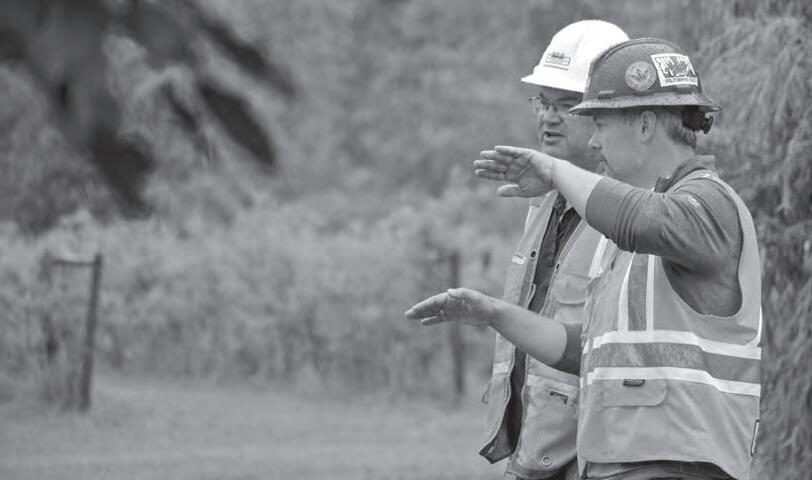







Employee Health & Wellness Plan available




HEAVY EQUIPMENT OPERATOR – Minimum 5 years or 5,000 hours operating experience on excavator. Full-time, Monday – Friday. $33-$42 per hour.
• Language Resource Worker or Language Teacher ($46,683 to $109,520 per year)
• Cultural Camp Supervisor ($46,683.00 to $63,973.00 per year)

HEAVY DUTY EQUIPMENT MECHANIC - Commercial Truck & Transport, Transport Trailer, Class 1 or 3 air brakes preferred. 4x10 or 5x8 schedule. Red Seal certified receive $200/month tool allowance. $39.70- $47.90 per hour. 5% premium on hourly wage for Lead Hand position.
Please visit our career page for more information: https://lilwat.ca/careers/
Please visit our career page for more information: https://lilwat.ca/careers/


CONSTRUCTION LABOURER – Great opportunity to learn on-the-job. Stamina for physically demanding work and perseverance to brave inclement weather required. Previous experience preferred but not required. Training provided. $25-$32 per hour.





















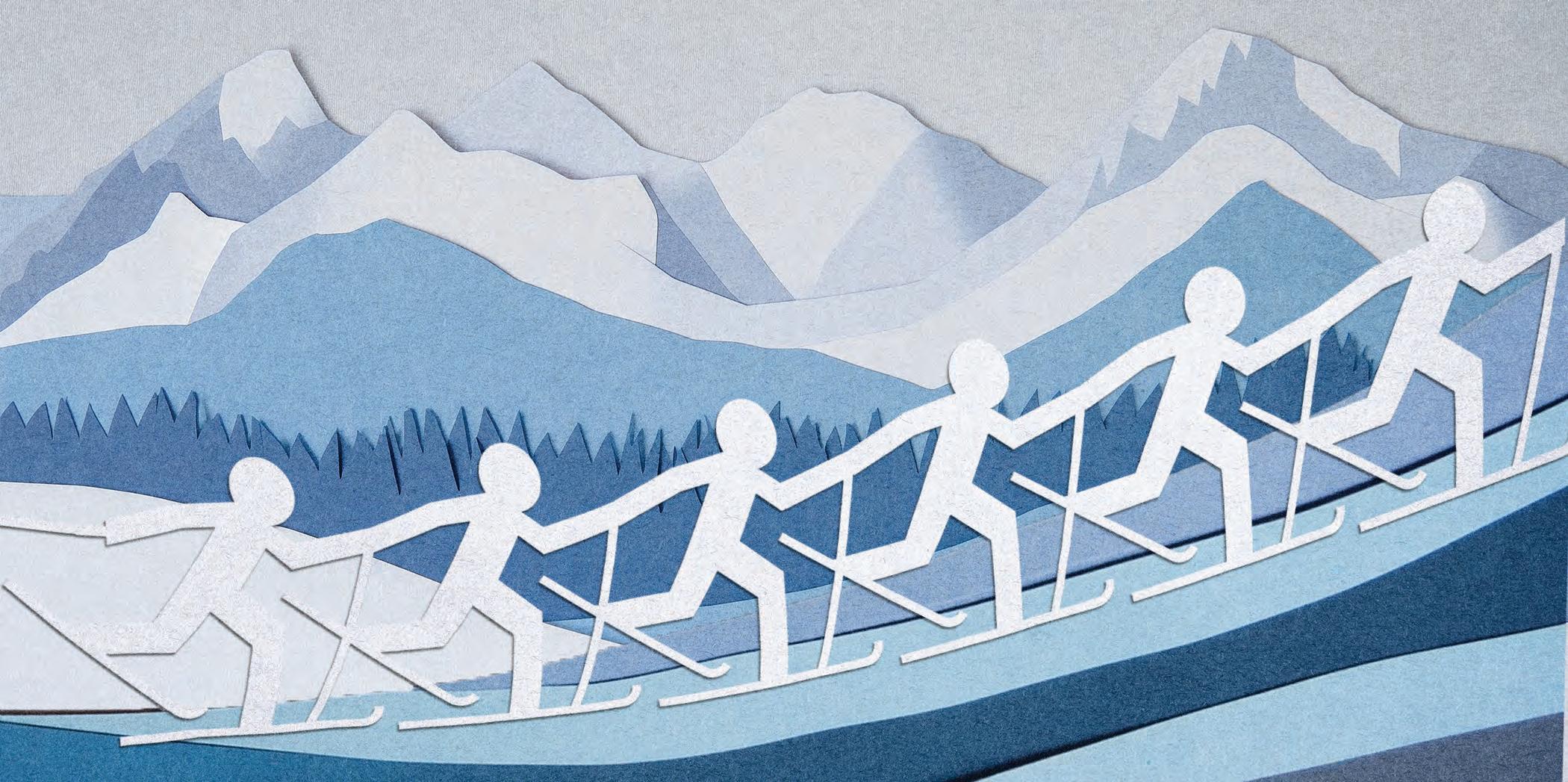
FOR OBVIOUS REASONS, I try not to spend too much time on social media these days. But the algorithm sent me something that made me smile last week: a video uploaded to the Mammut YouTube channel called Heart of the Mountain The 10-minute film put a spotlight

BY LIZI MCLOUGHLIN
on Shames, the ski hill outside Terrace that’s recently been gaining recognition for its deep powder, low-key vibe, and easily accessed
But this wasn’t your typical highlight reel of backflips, face shots, and steep spines. The Heart of the Mountain in question was Shames’ unique ownership model: it’s a nonprofit, volunteer-run ski hill, fully owned and operated by the local community.
If you don’t know the story: in 2008, struggling to stay afloat, the owners of Shames announced it would be their final season of operations. Locals rallied together and founded a cooperative to purchase the mountain and keep it open for the community. Individuals and businesses bought in, raising a few hundred thousand dollars, and by 2011 a purchase agreement was reached. The ski hill
passed into community ownership, where it’s been ever since.
For $299, anyone in the community can become a member of the My Mountain Co-Op that owns Shames. Members drive the strategy and direction for the mountain, and over the last 15 years, they’ve worked to keep the lifts spinning while making skiing and snowboarding accessible and affordable. The resort is open four days a week, with uphill access the rest of the time. A kid’s season pass costs just $126 and school lessons start at $25/day.
The community in Shames has built something special and rare: a ski hill that’s just for skiing. They might only have two lifts, but I’m pretty sure the locals have just as much fun skiing pow laps on a Thursday
in the black—the day-to-day reality of running a ski hill not-for-profit.
Still, Shames’ story questions so many of our assumptions about what it means to run a ski resort. In a town where our mountains drive $1.27 billion of consumer spending every year, our beloved winter sports now feel inexorably commercial. But while it might feel as though there’s no other way, Shames is a quiet reminder there is.
And I don’t just mean another way to run a ski hill. I’m happy to leave that to the experts. I mean a different way to solve problems, as a community. To me, Shames is a story about what happens when a community decides to take control of its own future. These days, it’s easy to feel powerless. Whistler may be a bubble, but
They might only have two lifts, but I’m pretty sure the locals have just as much fun skiing pow laps on a Thursday morning as we do. And I bet the lift lines are shorter, too.
morning as we do. And I bet the lift lines are shorter, too.
If this all sounds too good to be true, let me bring you back down to Earth. In 202324, Shames reported revenues of $1.6 million with a net operating loss of $55,000. Reading their reports, there’s no mistaking the love, passion, and energy the community pours into the mountain. But you also can’t miss the daily grind to figure out how to spin chairlifts, groom pistes, and sell lift passes while staying
we’re not insulated from the increasing volatility of our economy, politics, and climate. And as individuals, it often feels like there’s nothing we can do—that we just have to play with the cards we’re dealt.
But Shames’ story challenges that belief. In a tough moment, a small community came together and took control. No single person had the power to change their fate, but together they did. Passionate, driven, ordinary people decided they didn’t like what
was coming for them, and they took it upon themselves to create an alternative.
They didn’t take the obvious path, or the easy path, or the path to guaranteed success. Instead, they did something hopeful, bold, difficult, and kind of crazy. They took a risk, and prioritized their shared vision over shortterm gains. They didn’t know how to get there when they set off. I’m sure sometimes they disagreed, hit roadblocks, and felt overwhelmed. I wonder if, even now, they feel they’ve succeeded, or whether the daily grind means “success” always feels just out of reach?
But then, just like skiing, the destination was never the point. The story of Shames is about the journey: about people solving problems together and sticking with it when it got hard, in the hope that it might just work out. It’s a story about showing up, day in, day out, and creating something together.
I can’t help finding a lesson for Whistler in all this. We talk so much about the challenges we’re facing—housing, food insecurity, the climate crisis—and we all sometimes feel powerless in their wake.
But the thing is, there’s nothing inherently different about the locals at Shames. They didn’t have particular knowledge, power, or resources that made them uniquely able to do something bold in a moment of crisis. They just had a dream, they trusted each other, and then they showed up and got started.
Whistler has always been a place for dreamers—so what’s stopping us from getting started?
Lizi McLoughlin is a local non-profit leader, an average-but-enthusiastic mountain athlete, and an eternal optimist. n

1530 Spring Creek Drive Whistler
4 Bed | 5 Bath | 3,196 sq.ft.

$5,399,000 604-910-1103

Connie Spear connie.spear@evrealestate.com 1710 River Run Place, Whistler

17-7360 Crabapple Court, Pemberton
2 Bed | 2 Bath | 1,092 sq.ft.

$799,000 604-719-7646
Carmyn Marcano carmyn.marcano@evrealestate.com
4 Bed | 5 Bath | 2 Bed suite | 4,497 sq.ft.

$5,399,000 604-935-0700
Janet Brown janet.brown@evrealestate.com

9-40781 Thunderbird Ridge , Squamish
4 Bed | 5 Bath | 4,125 sq.ft.

$4,299,000 604-849-0880
Carlo Gomez carlo.gomez@evrealestate.com Vazquez Realty Group





604-616-6933 Kathy White PREC* kathy.white@evrealestate.com














